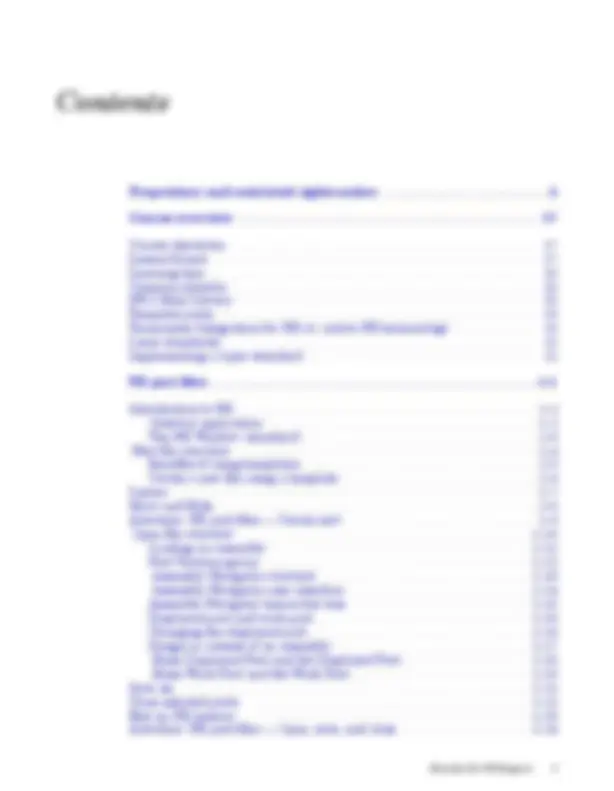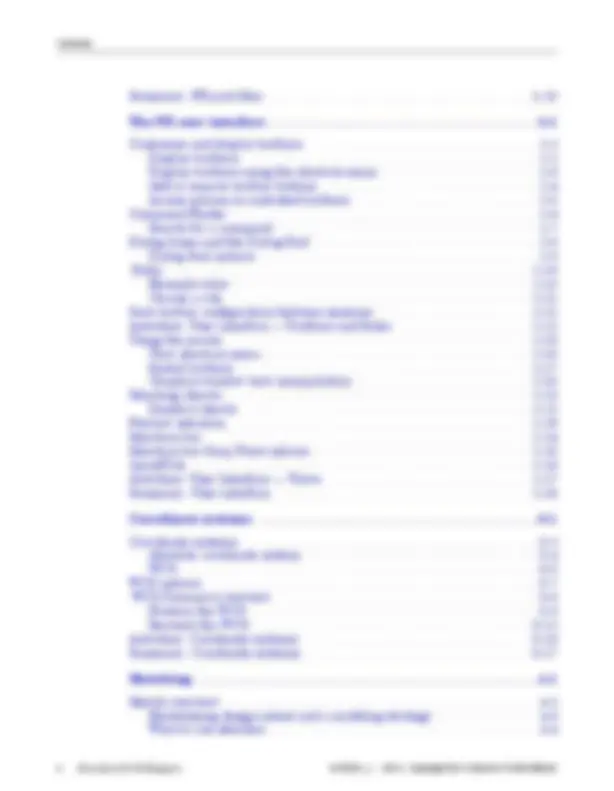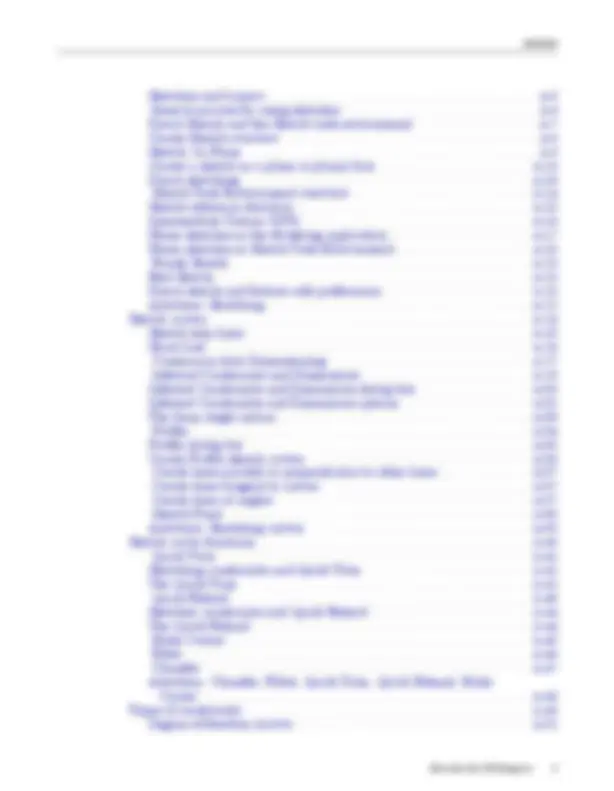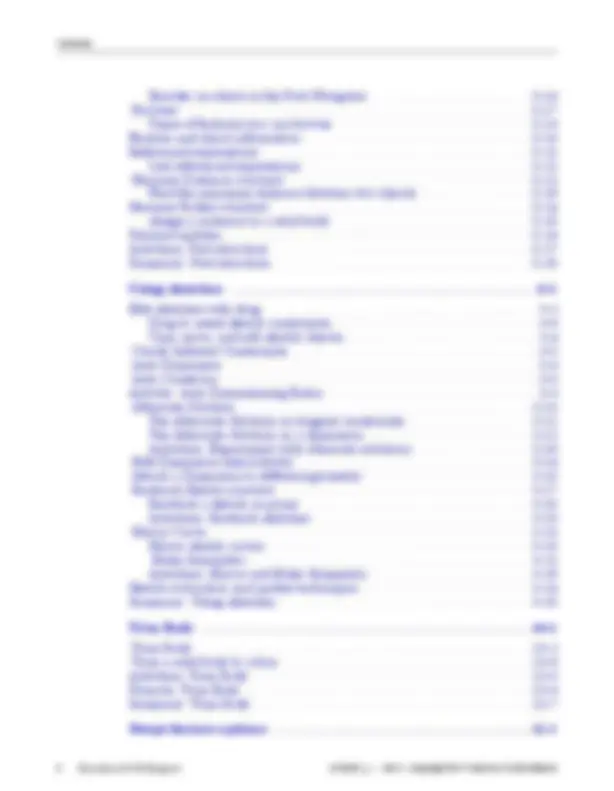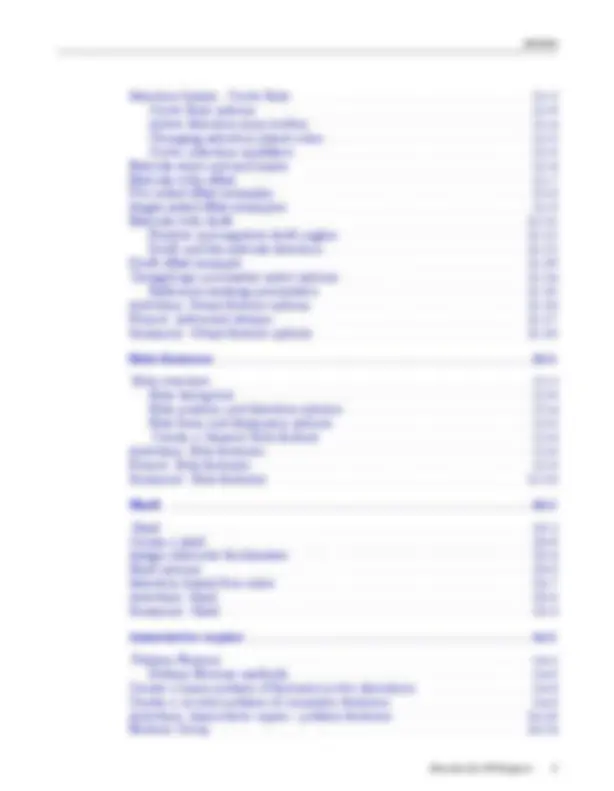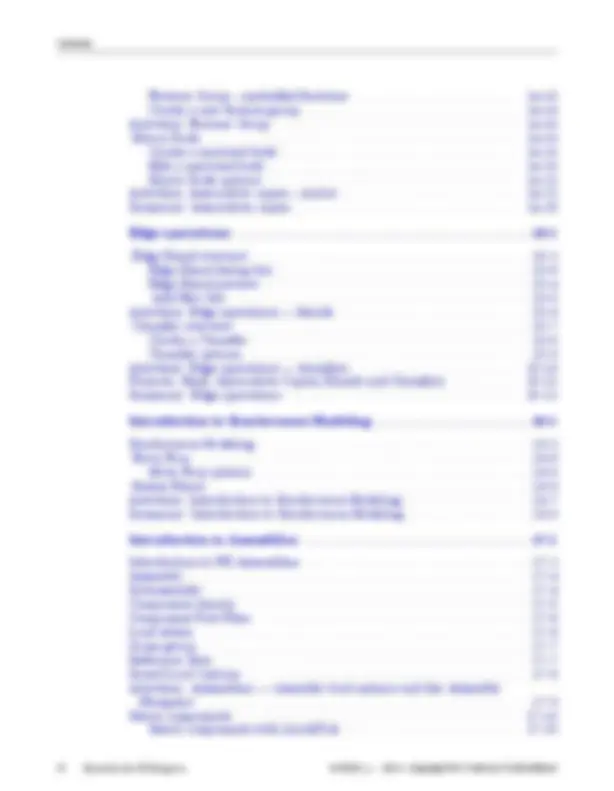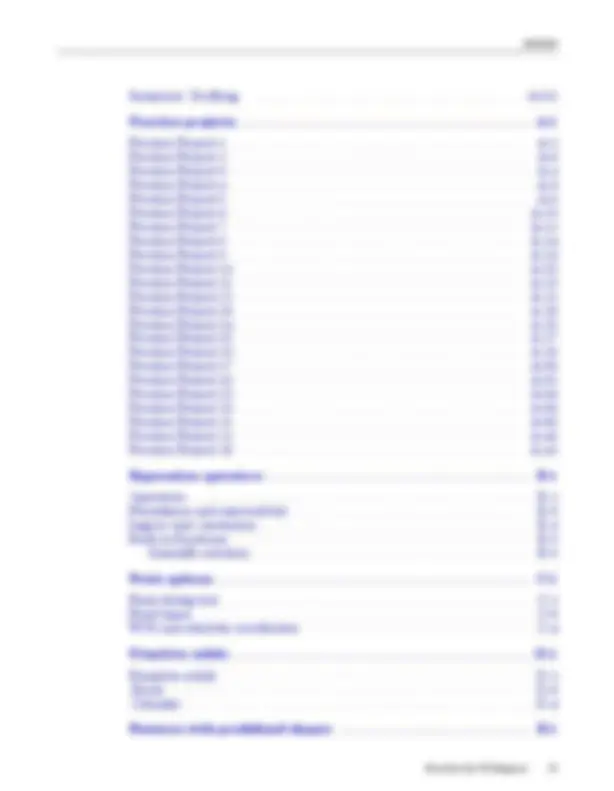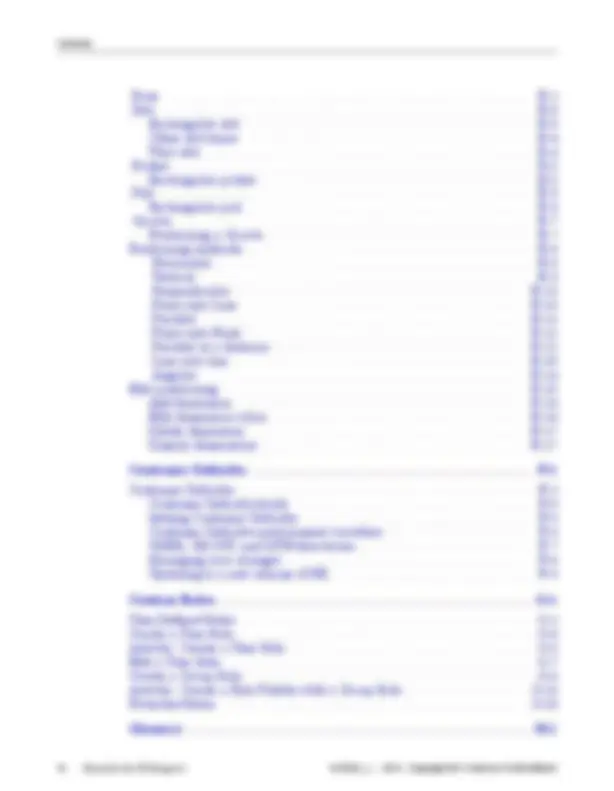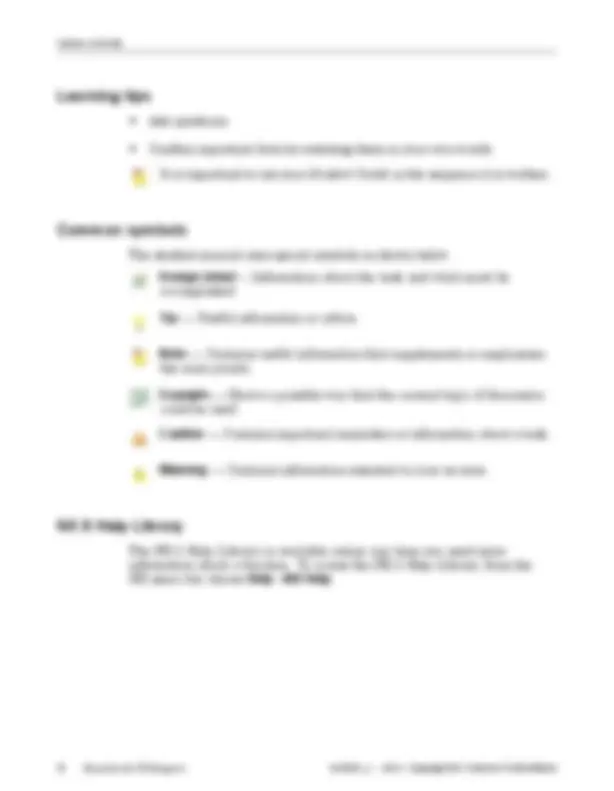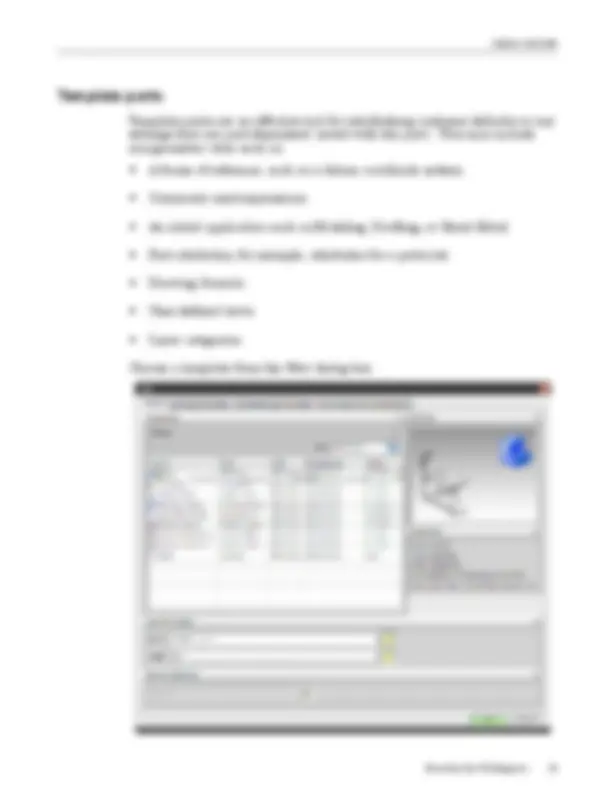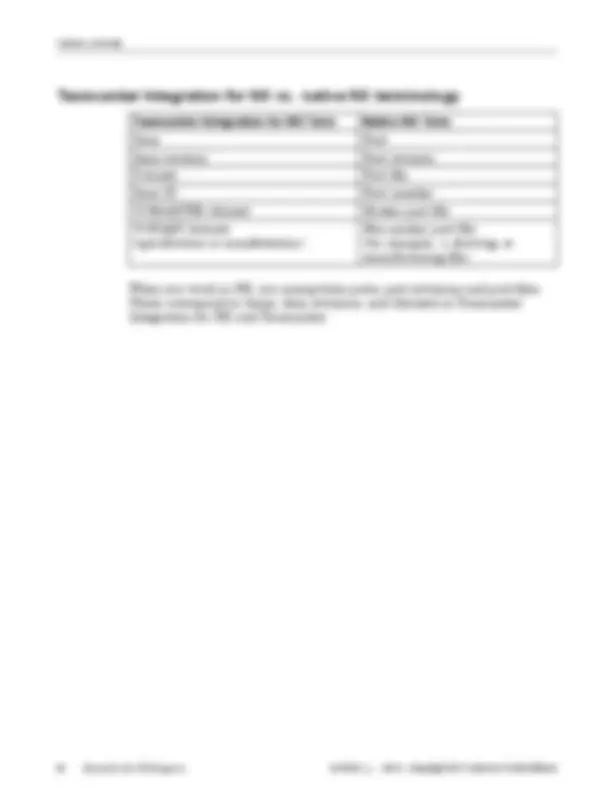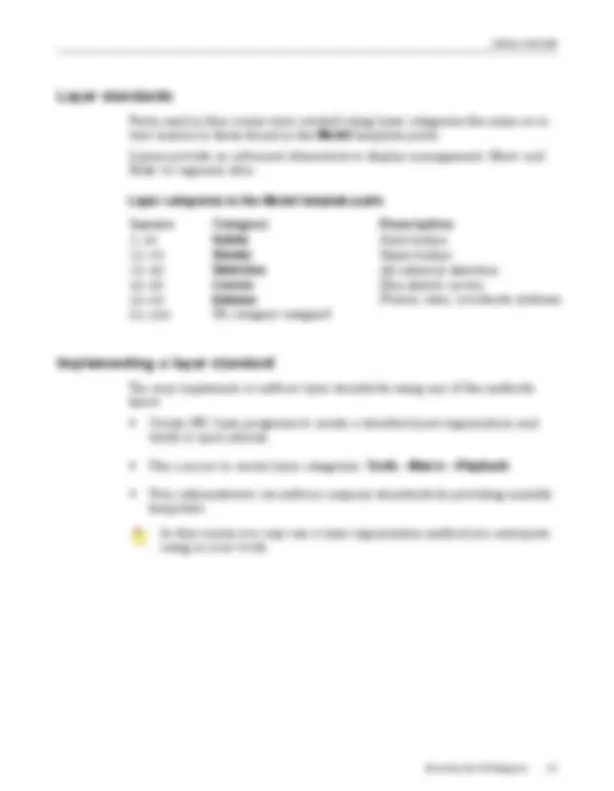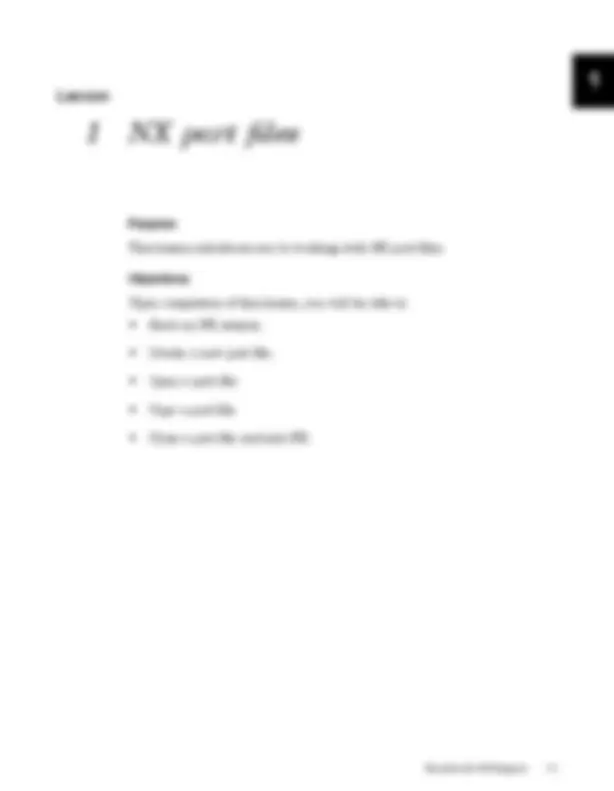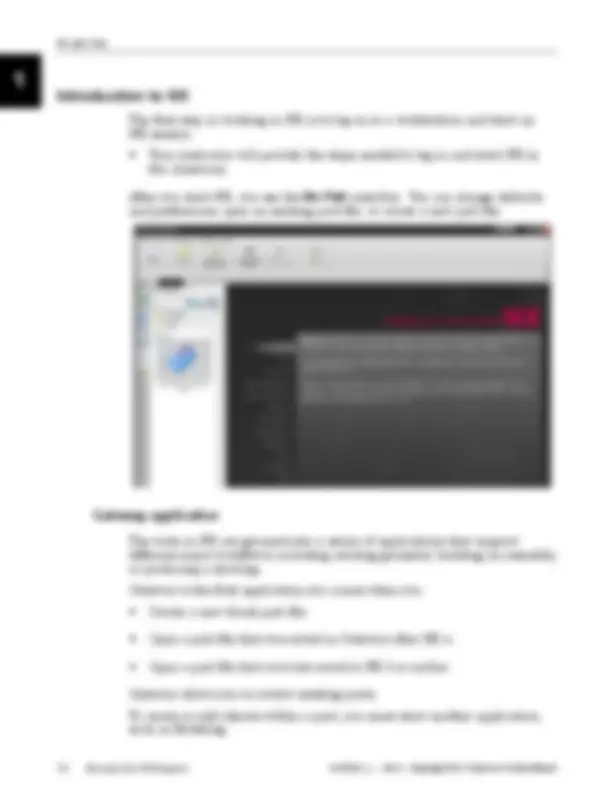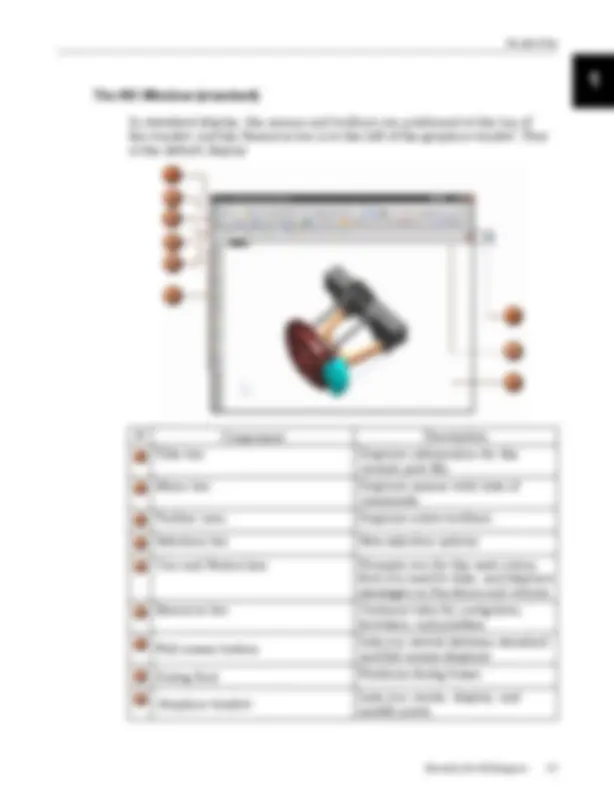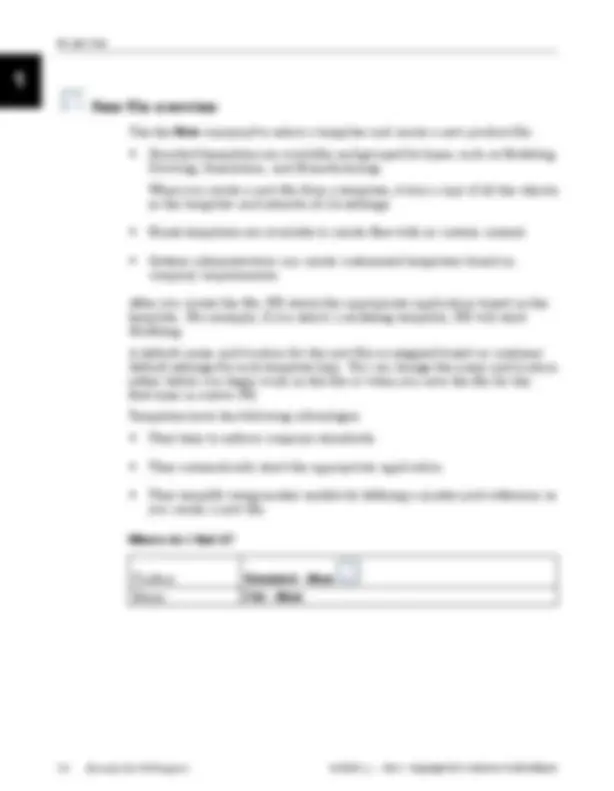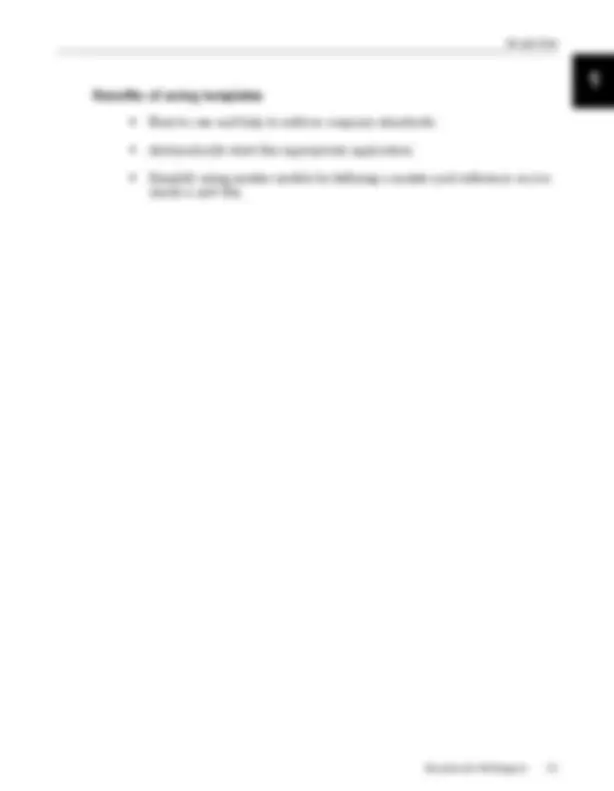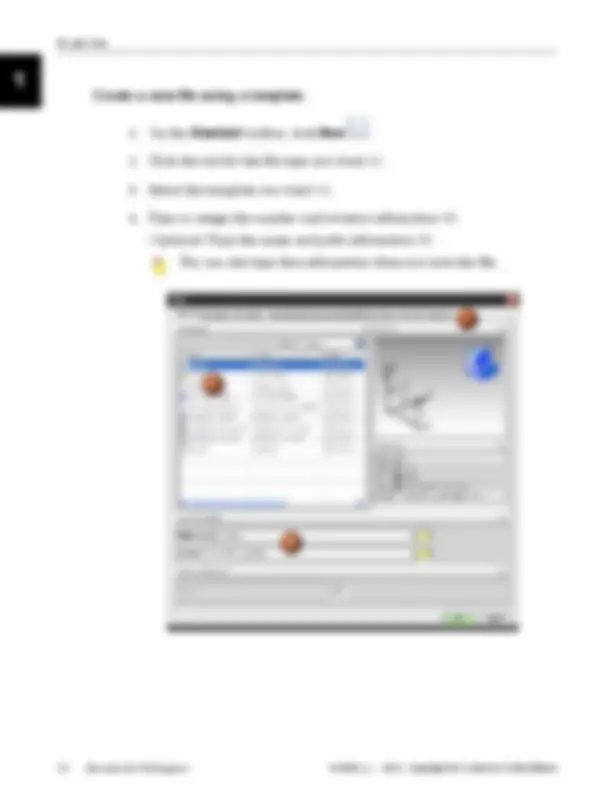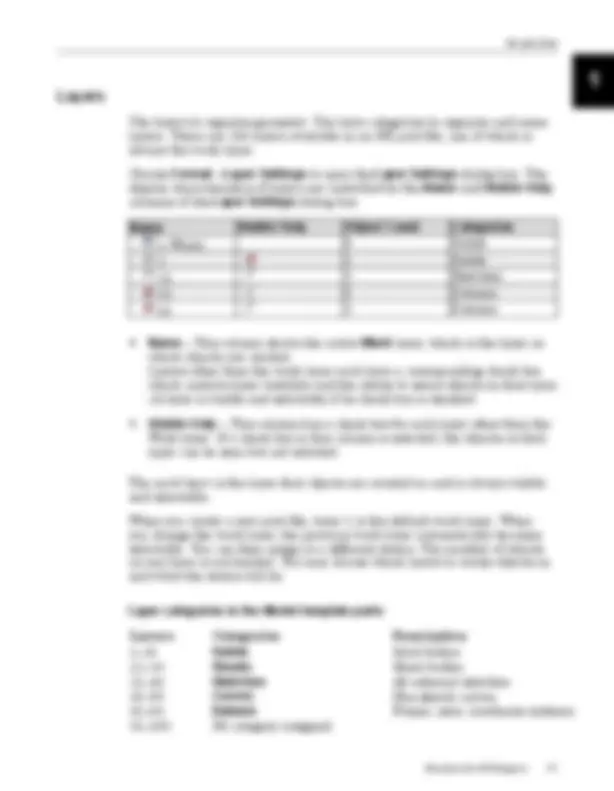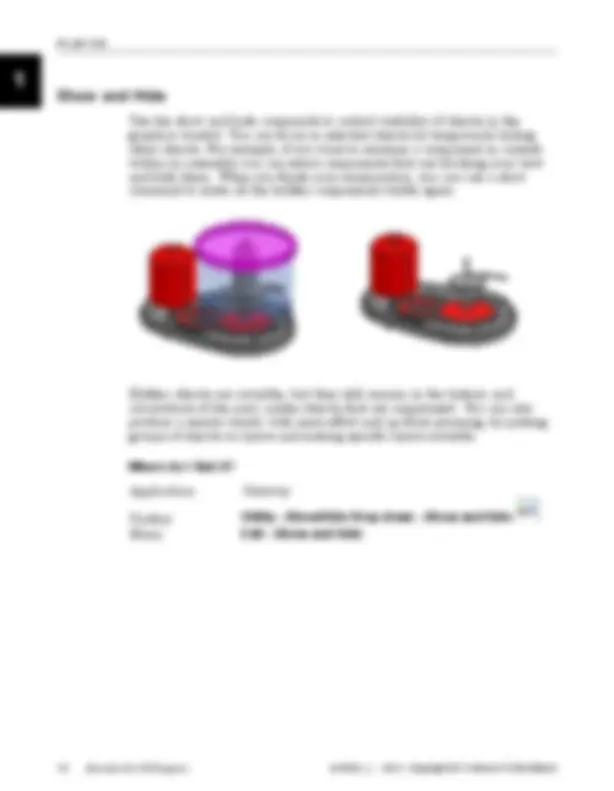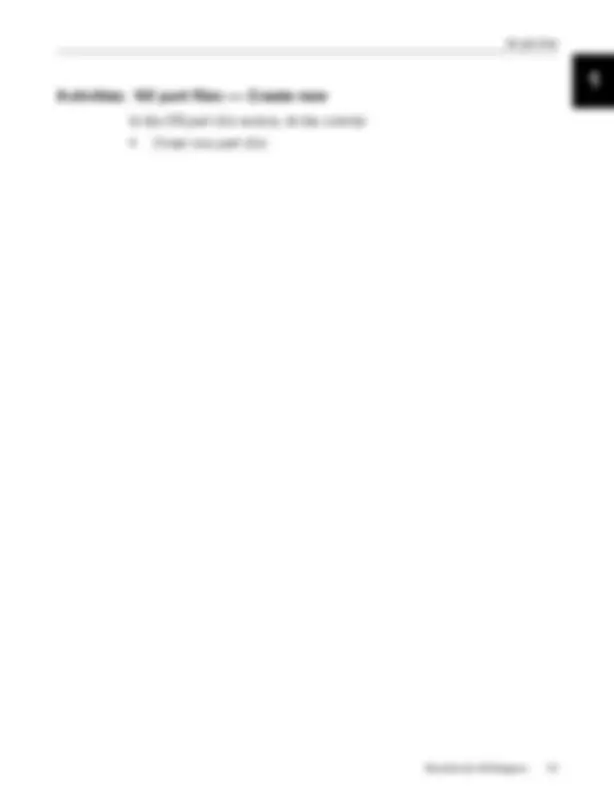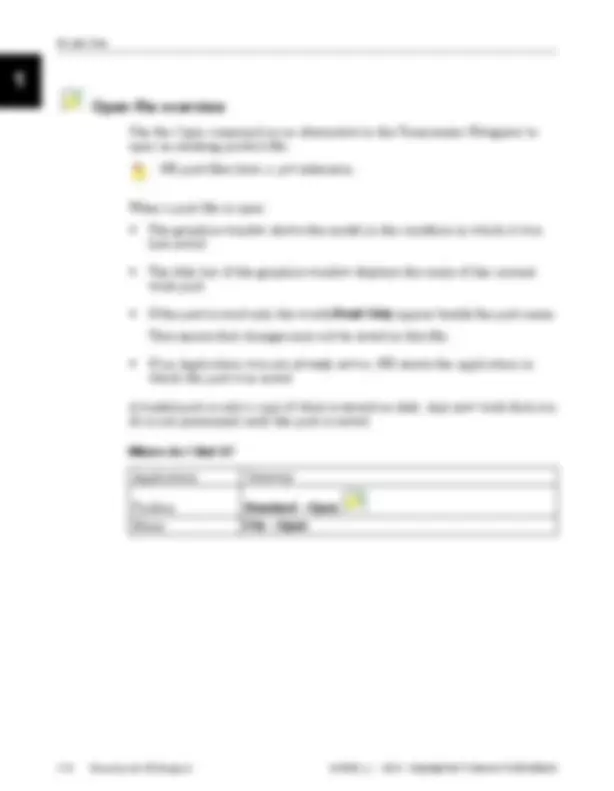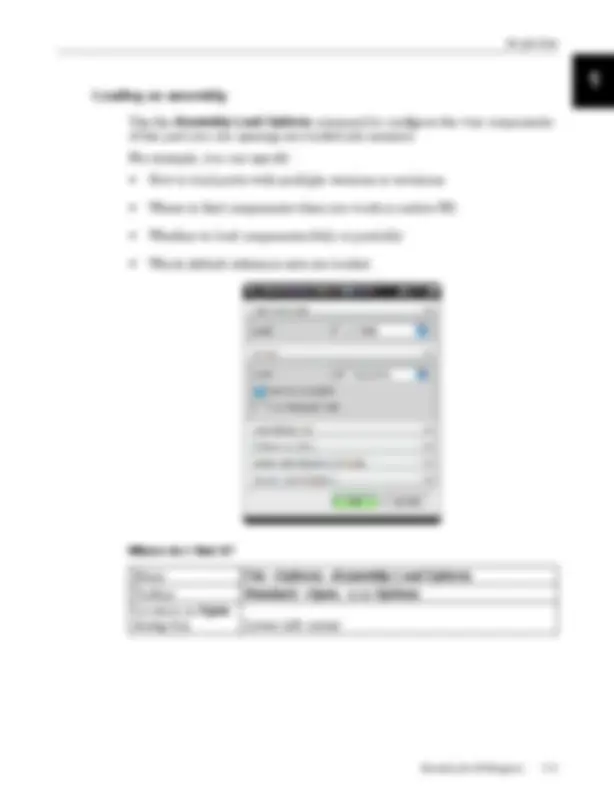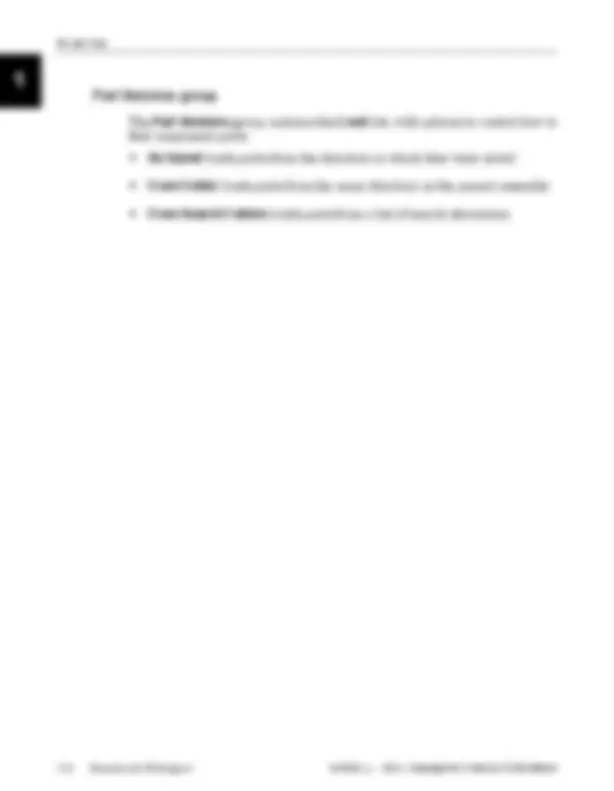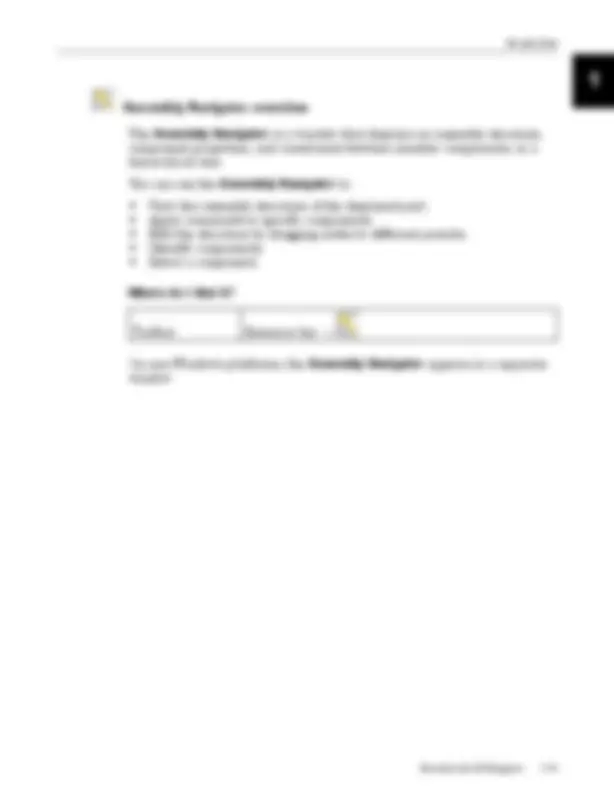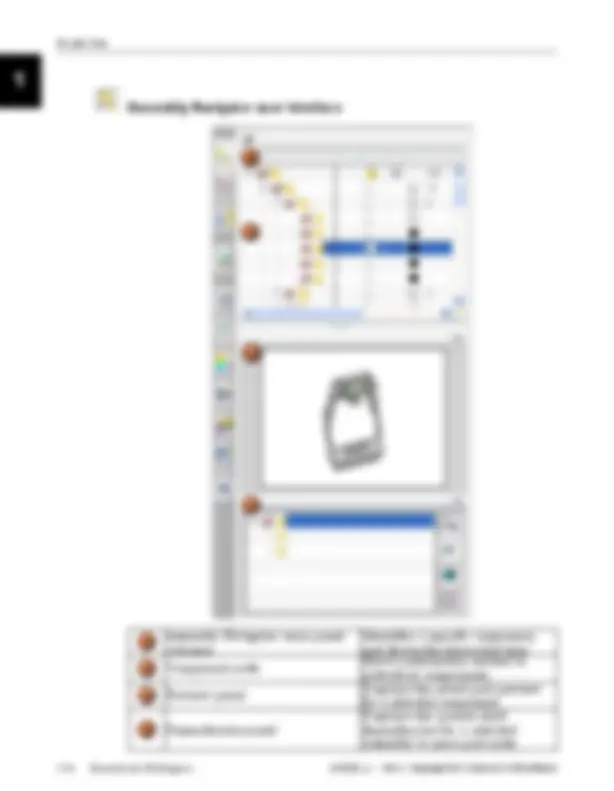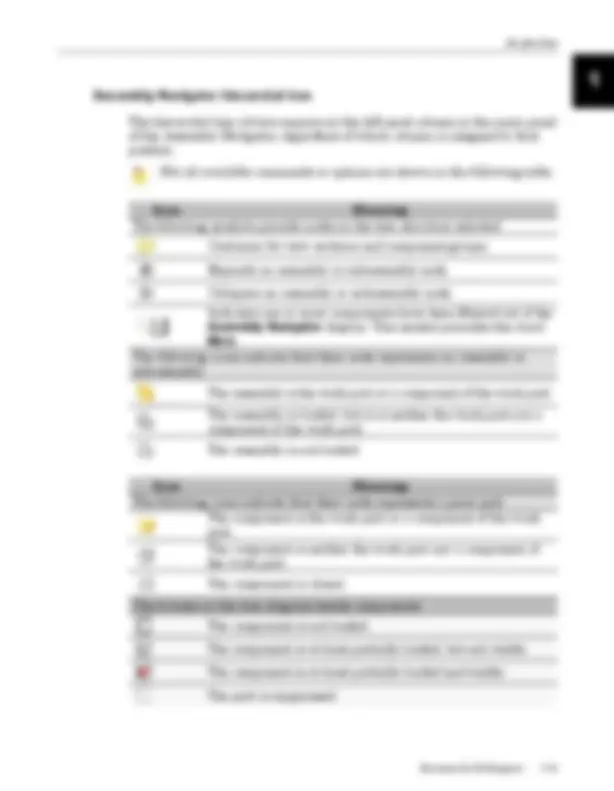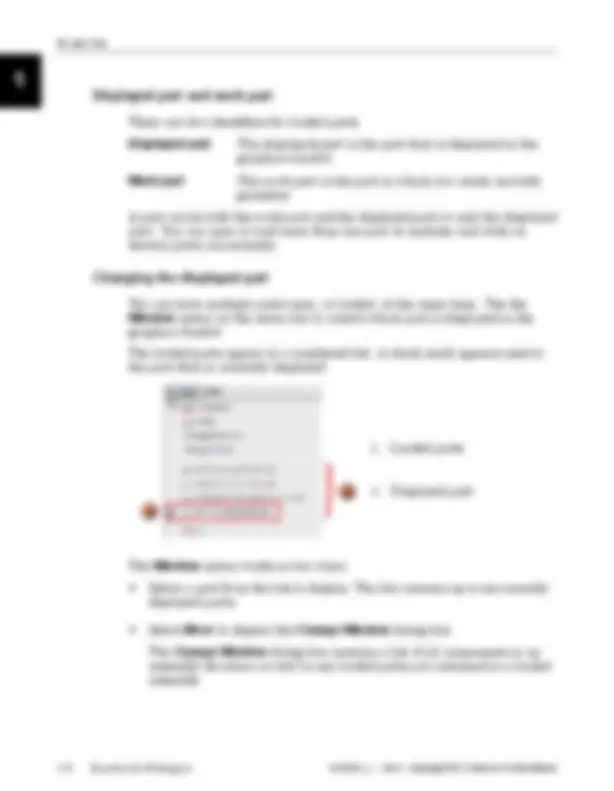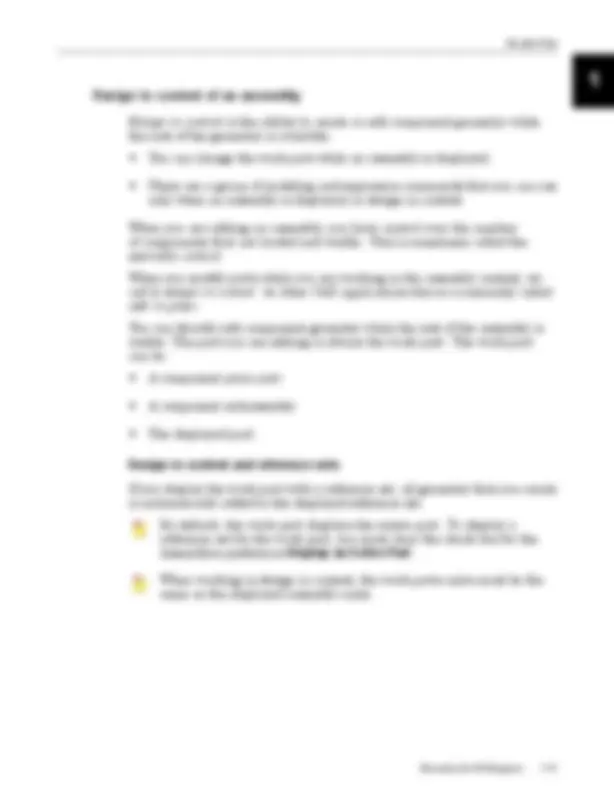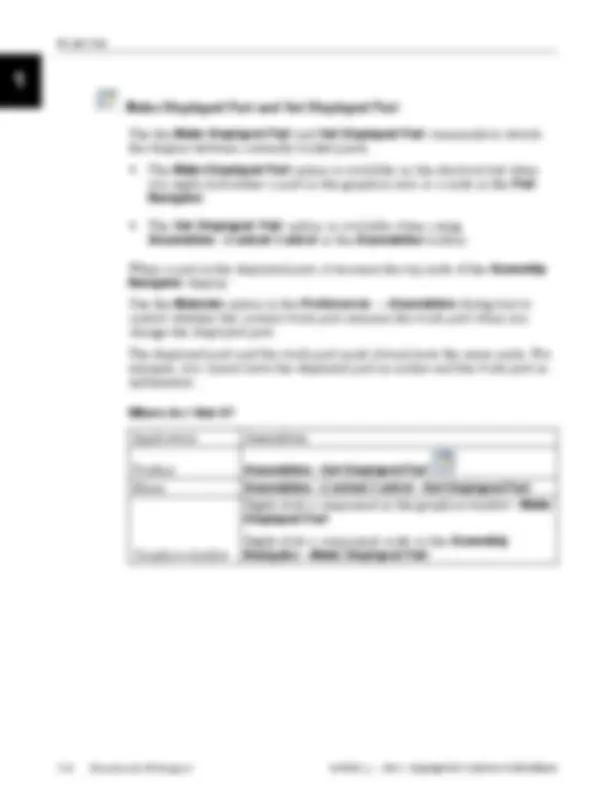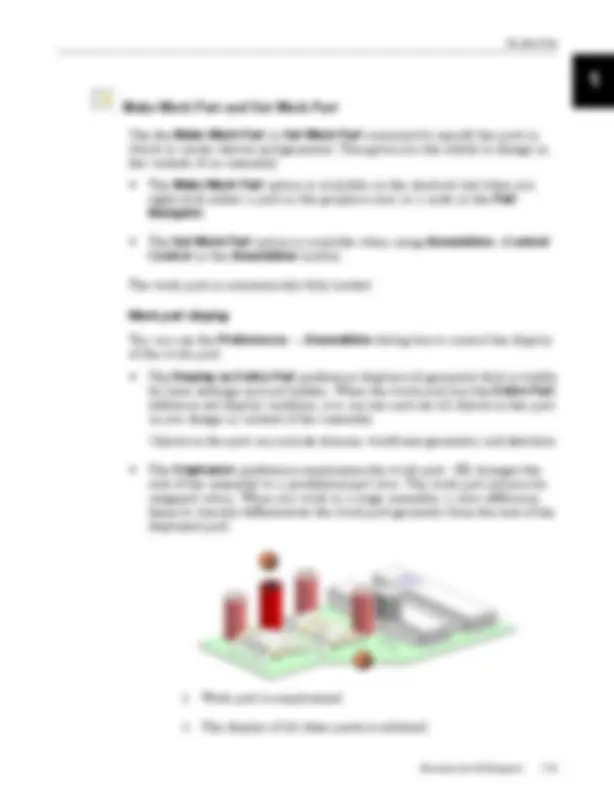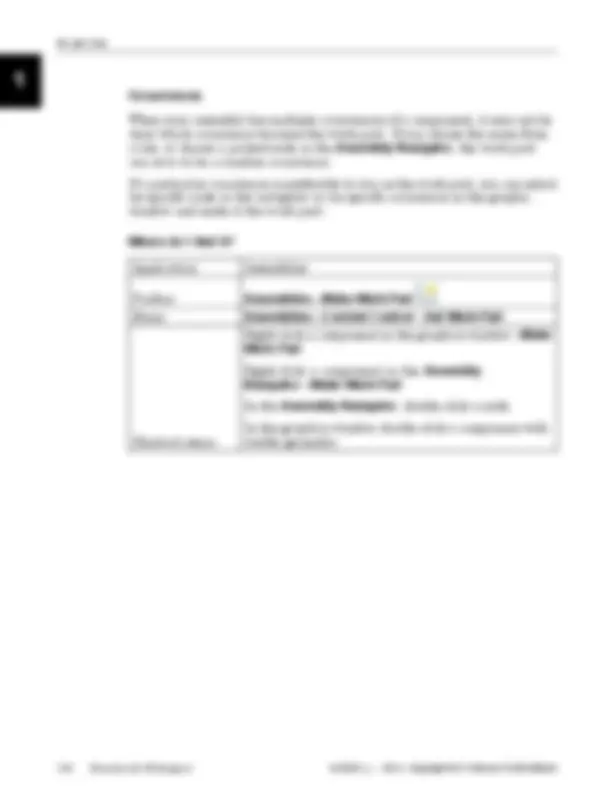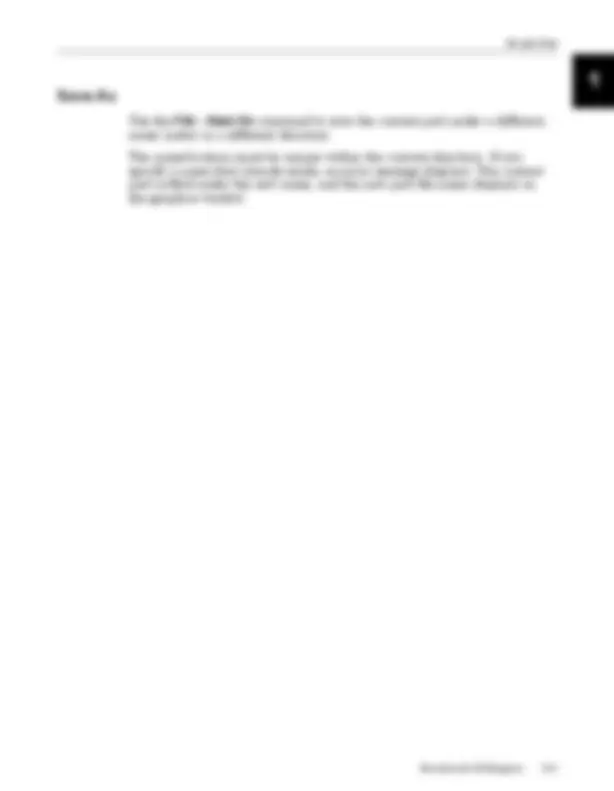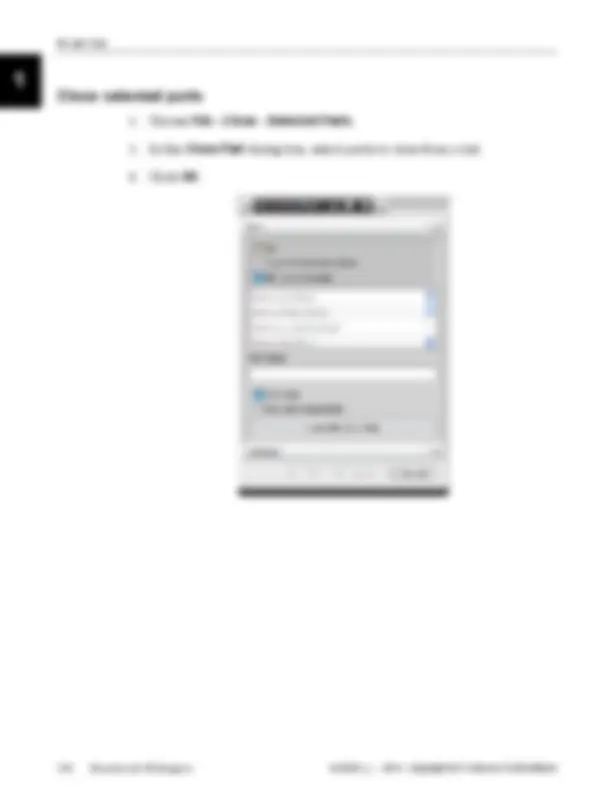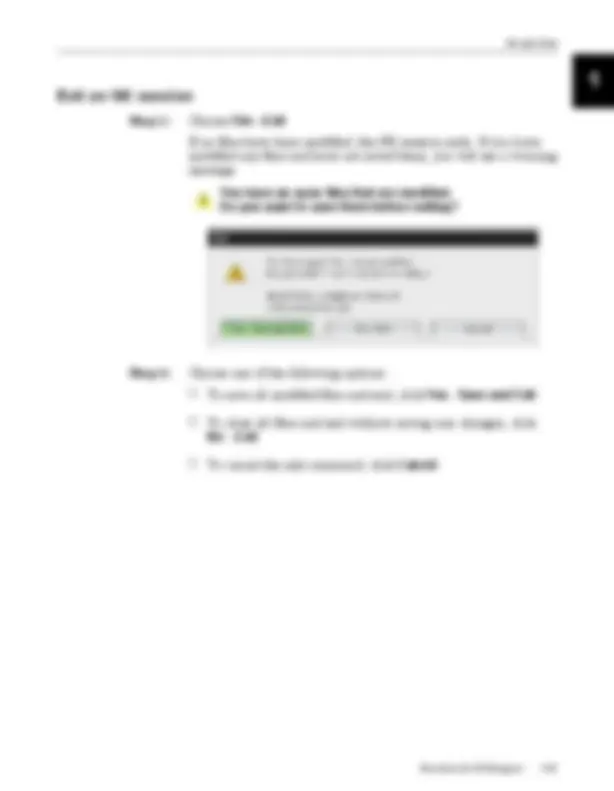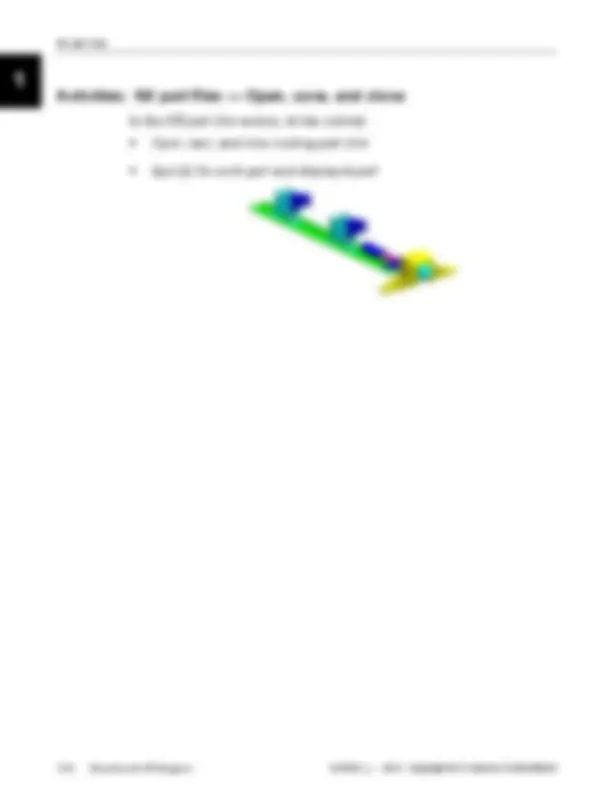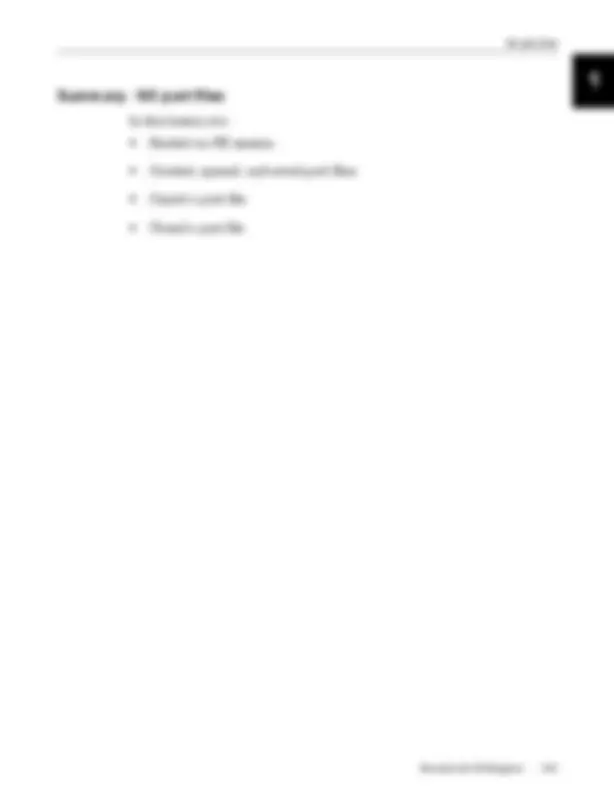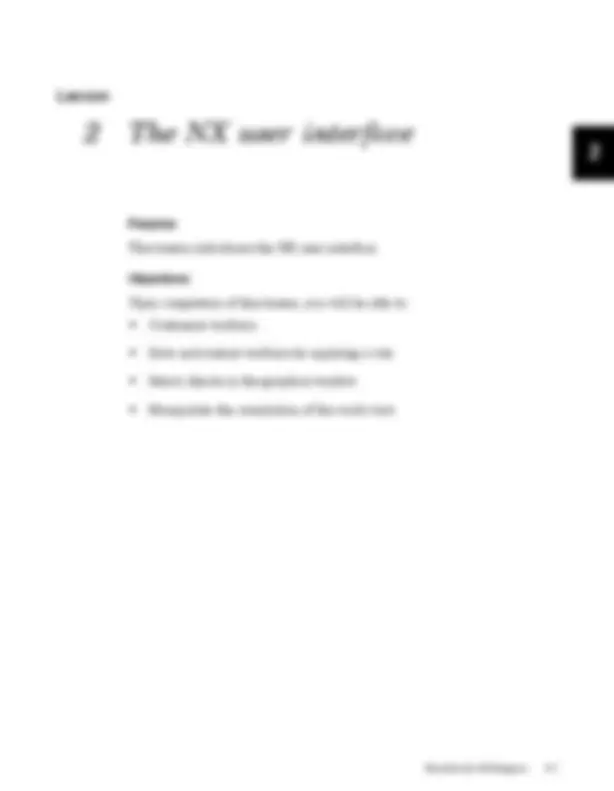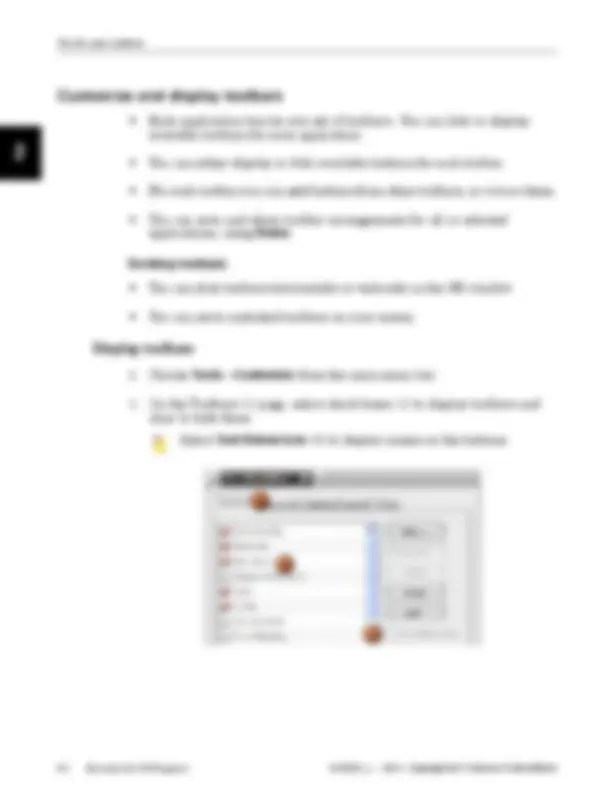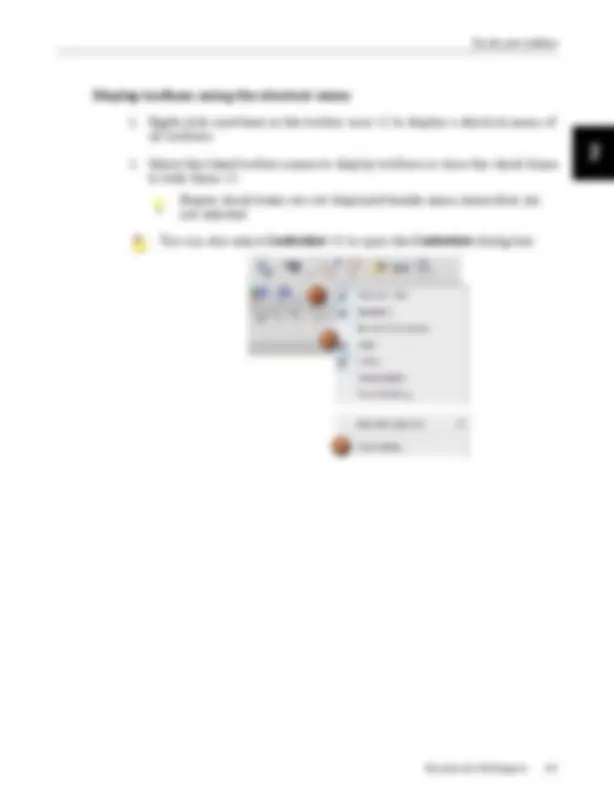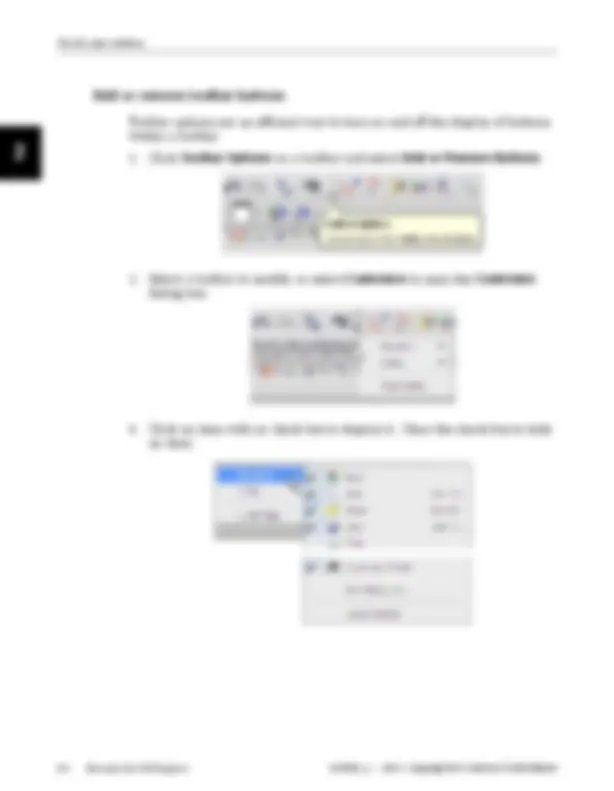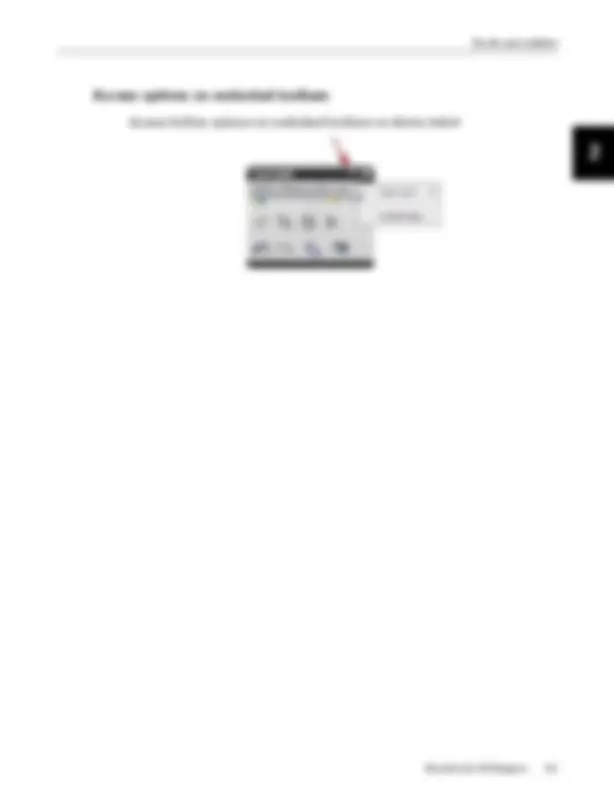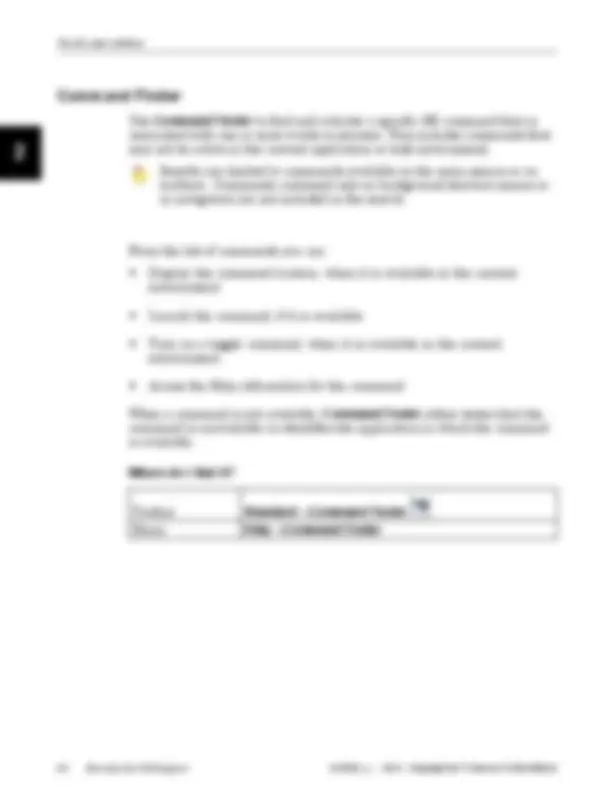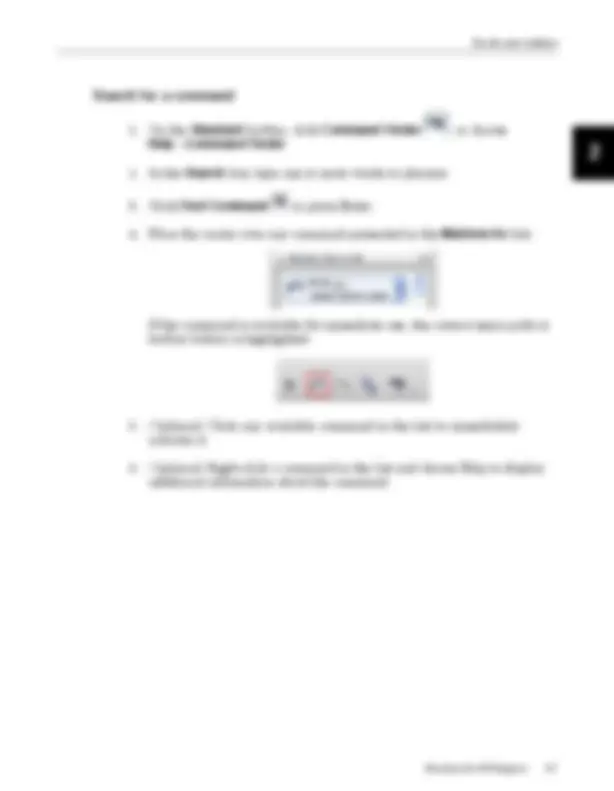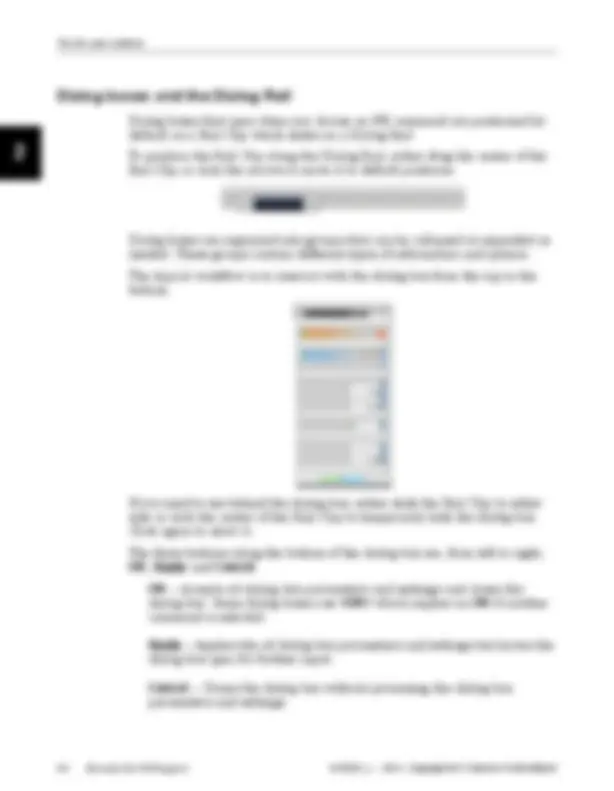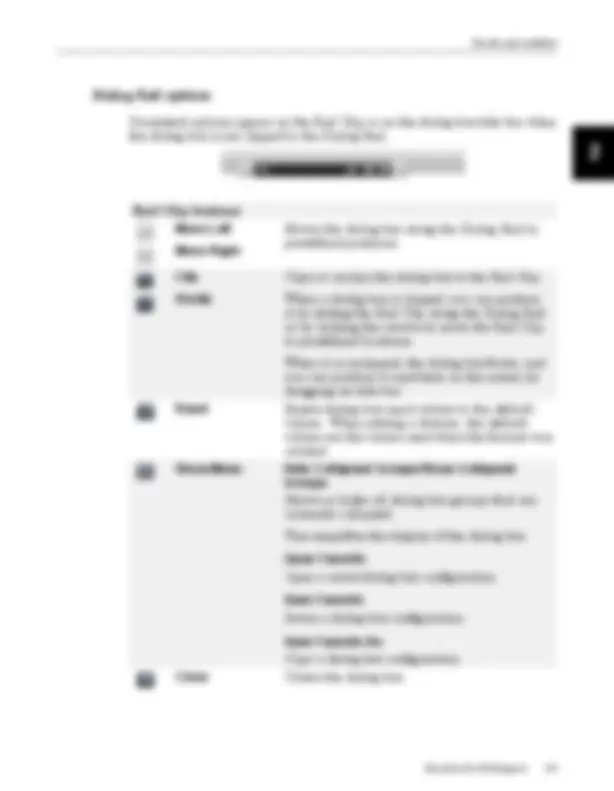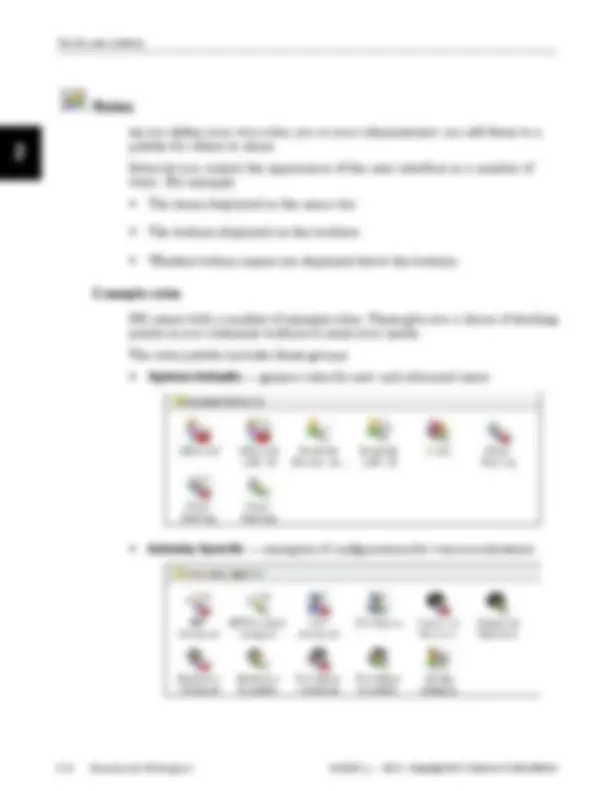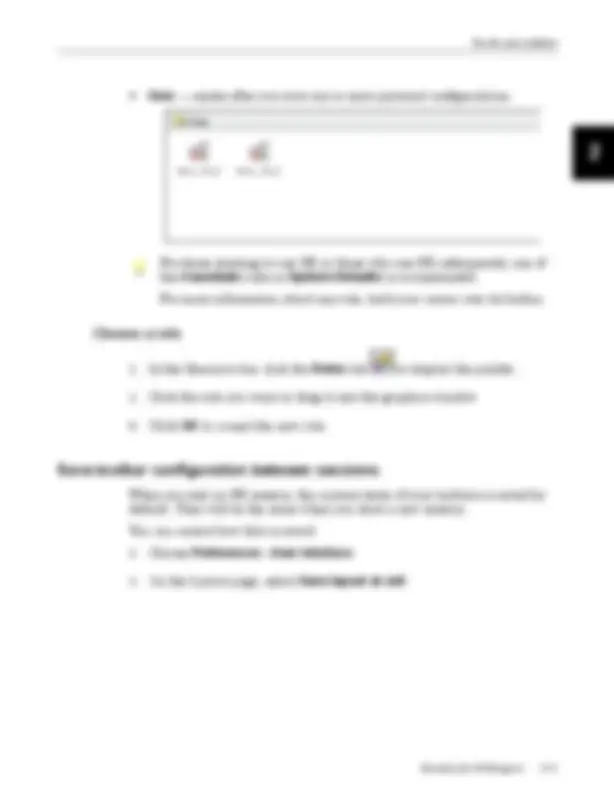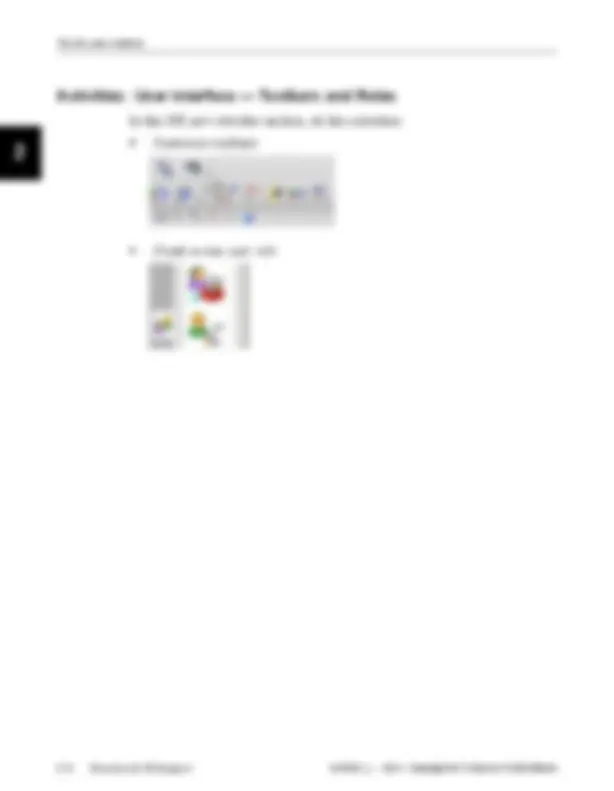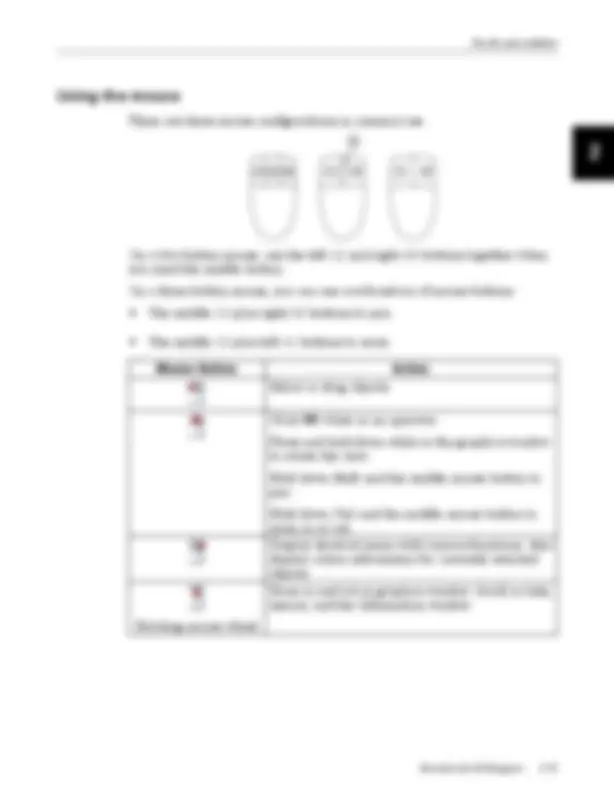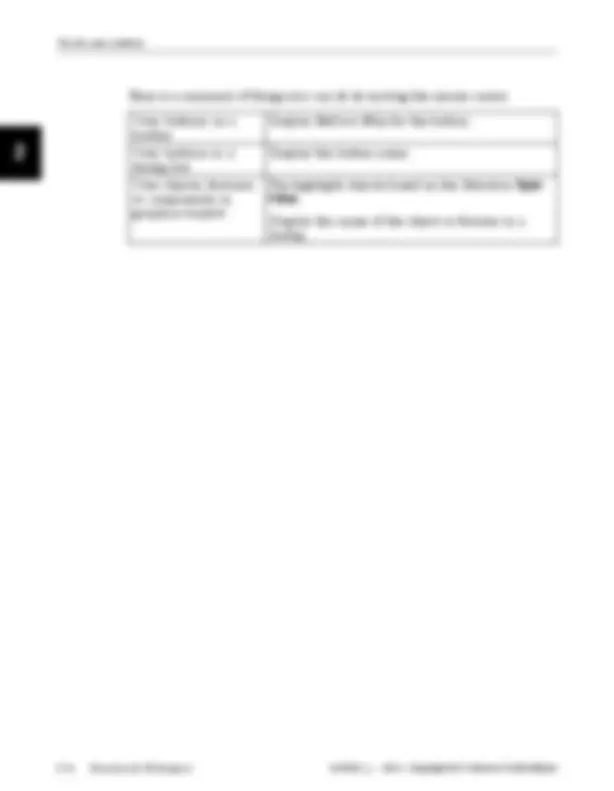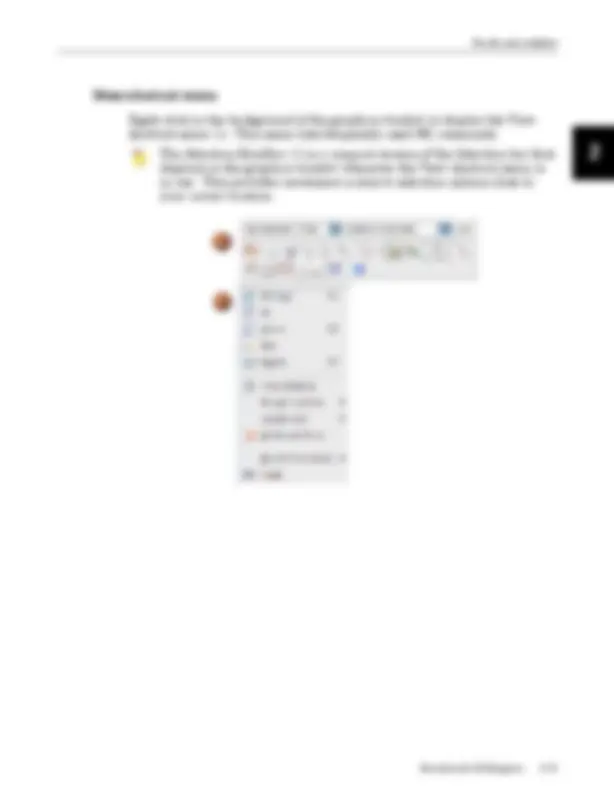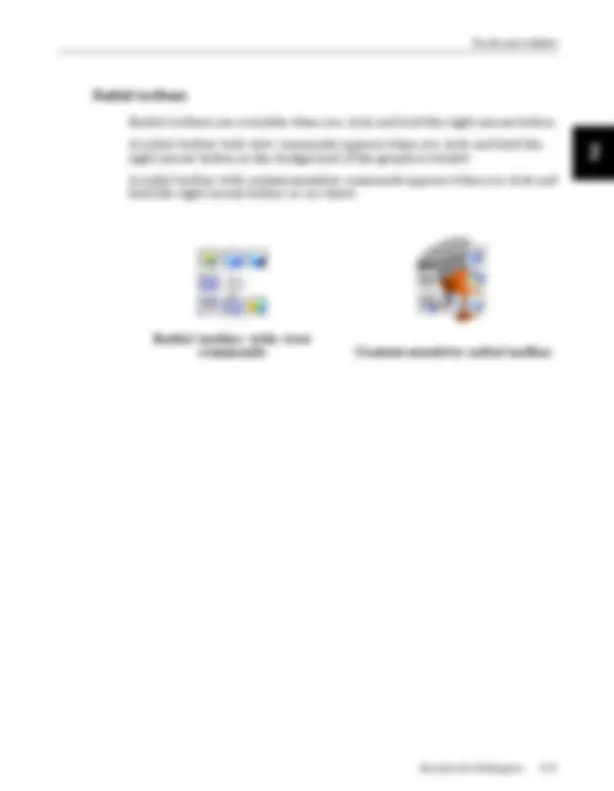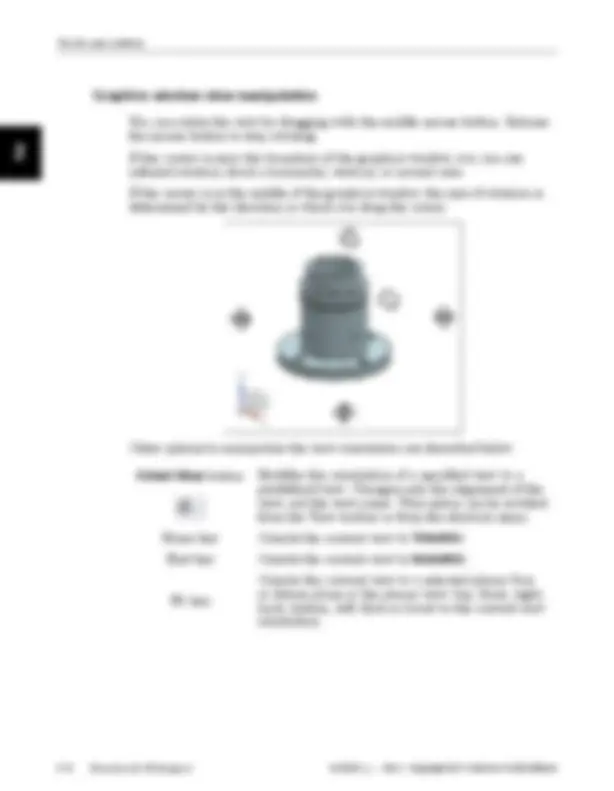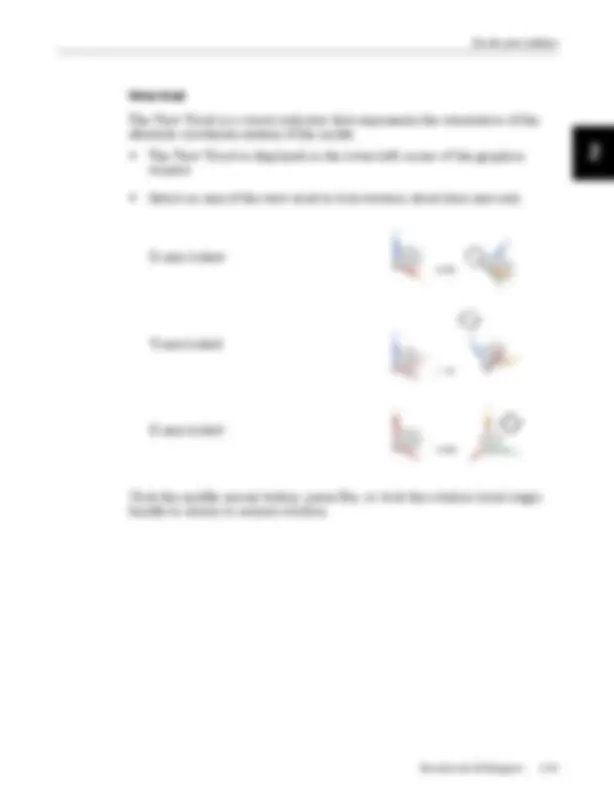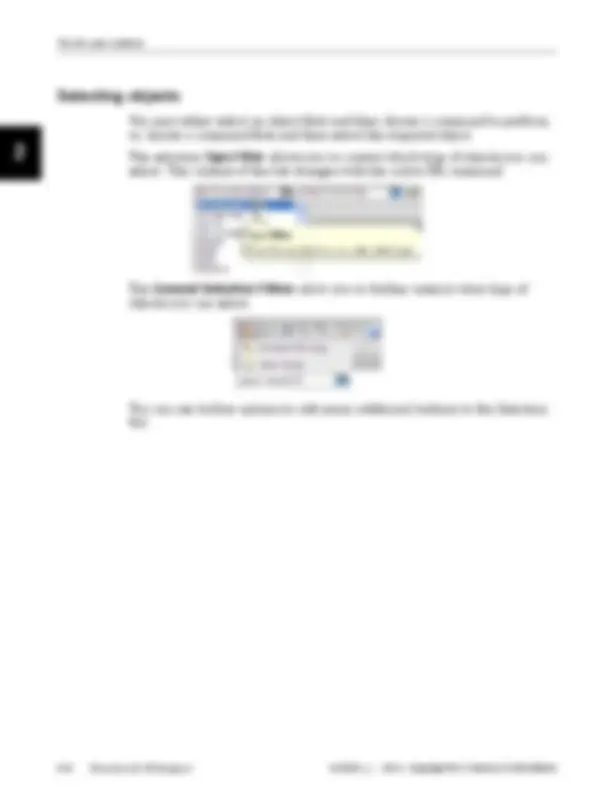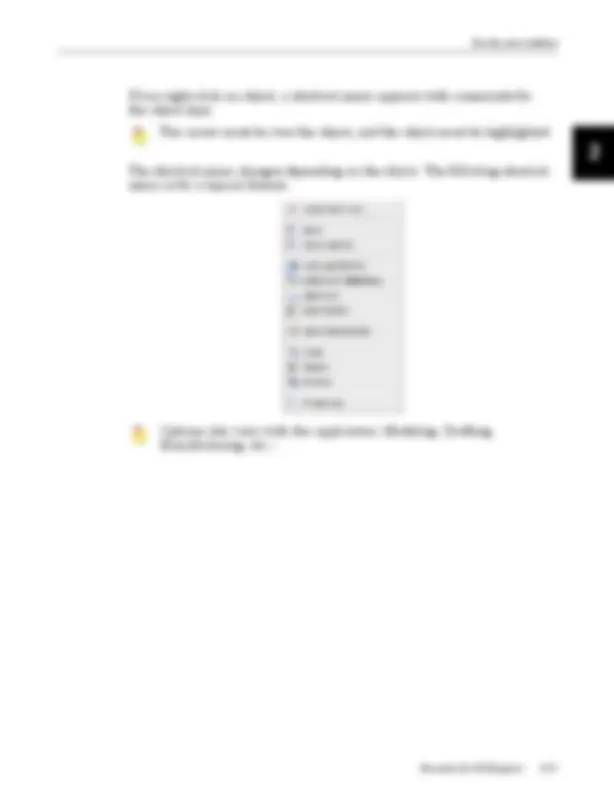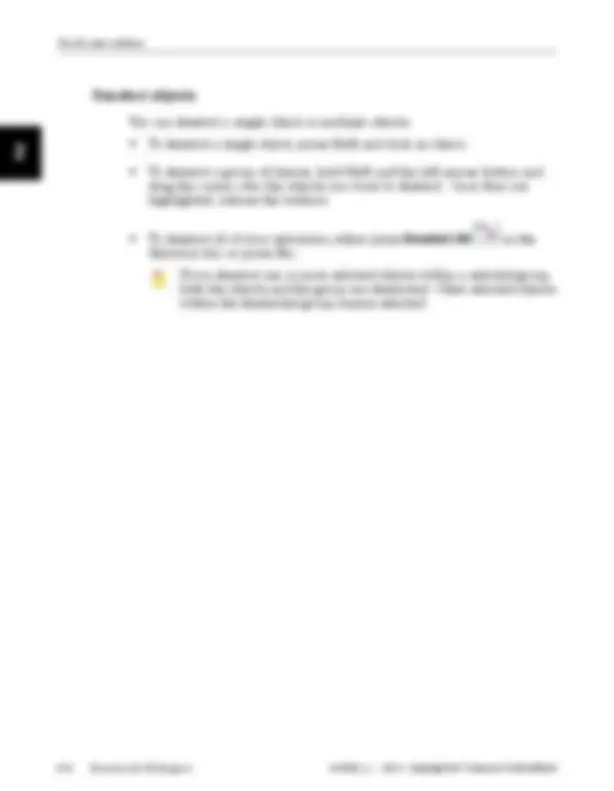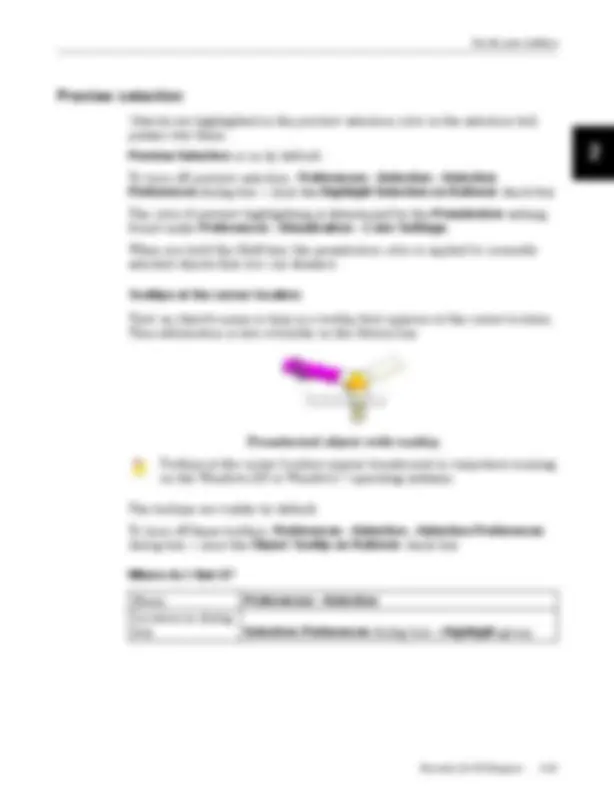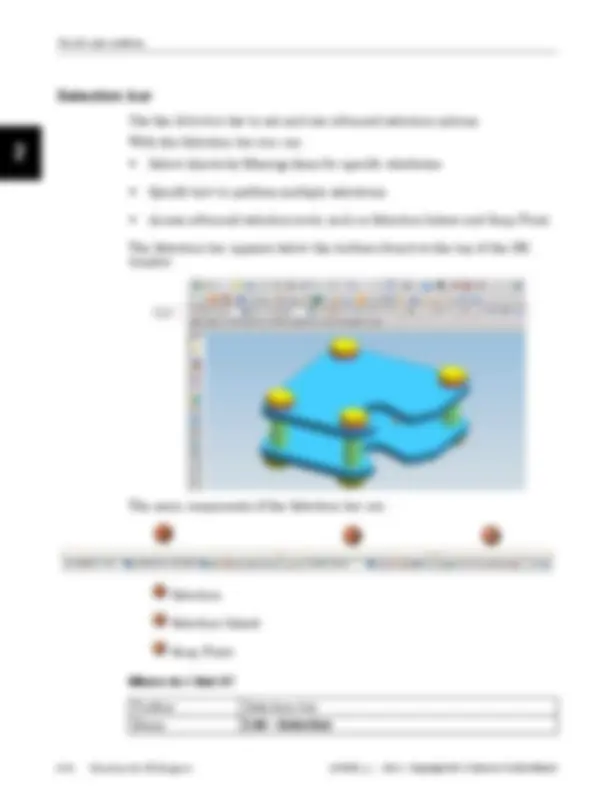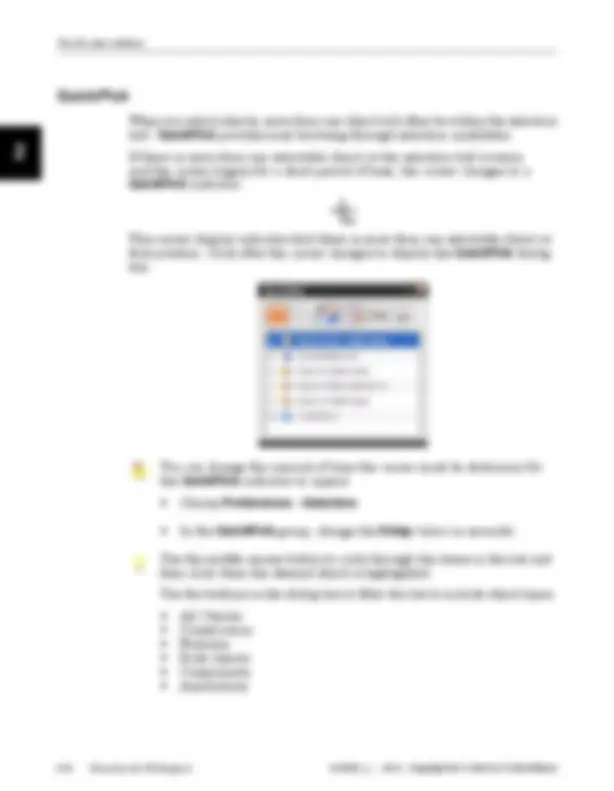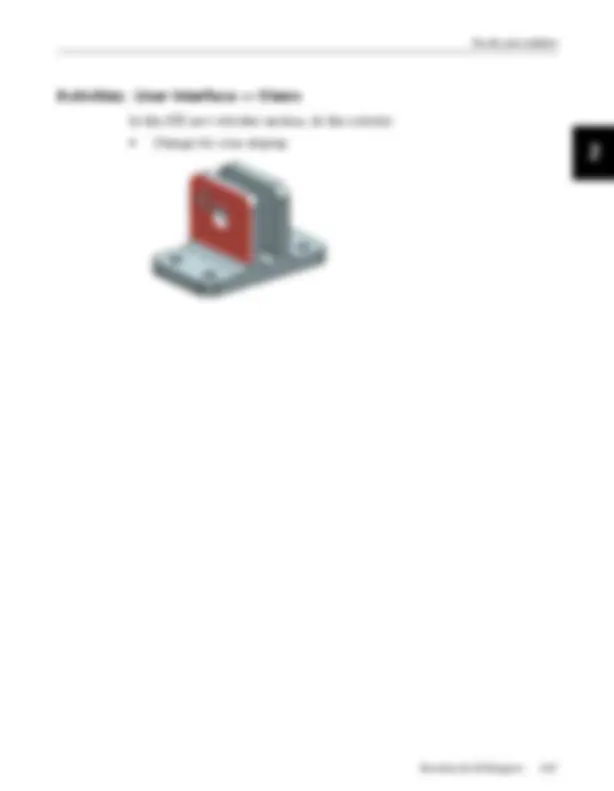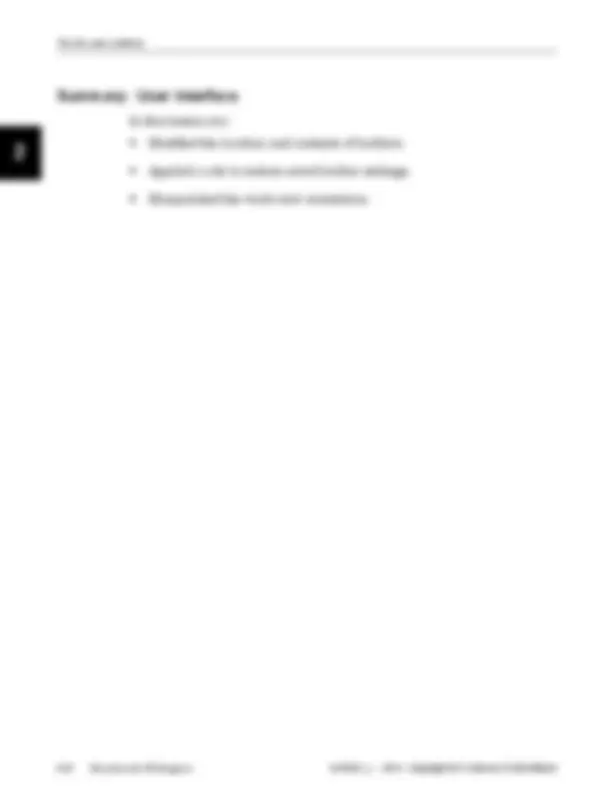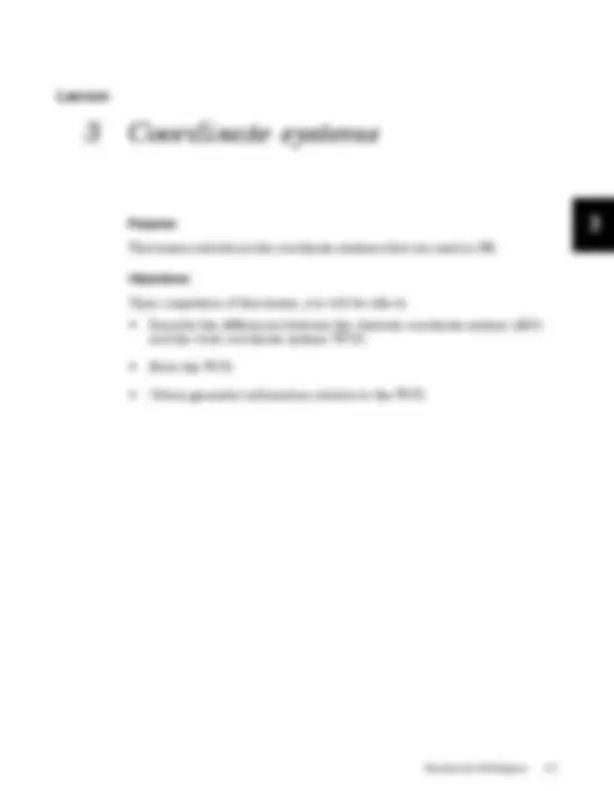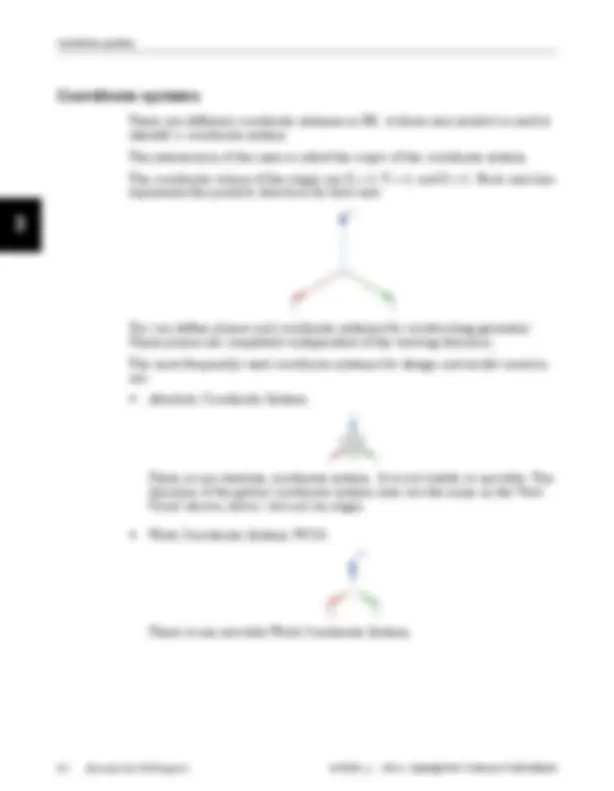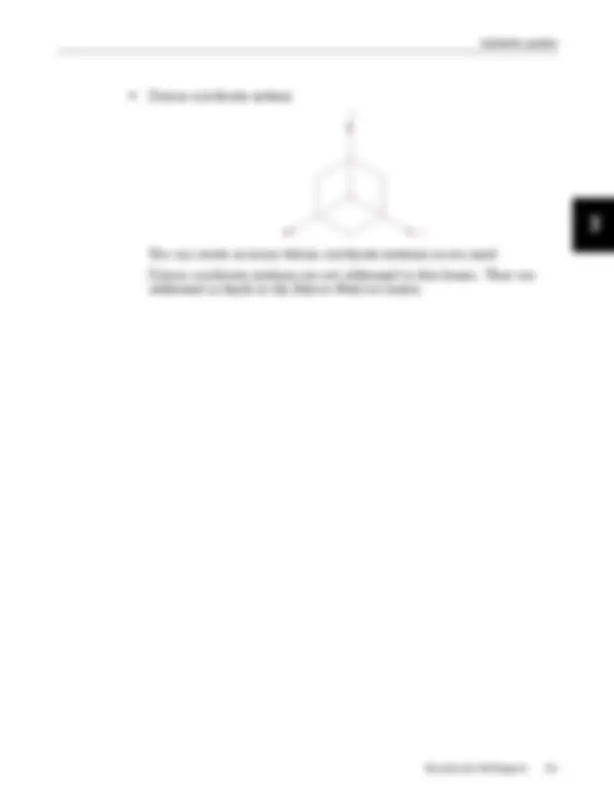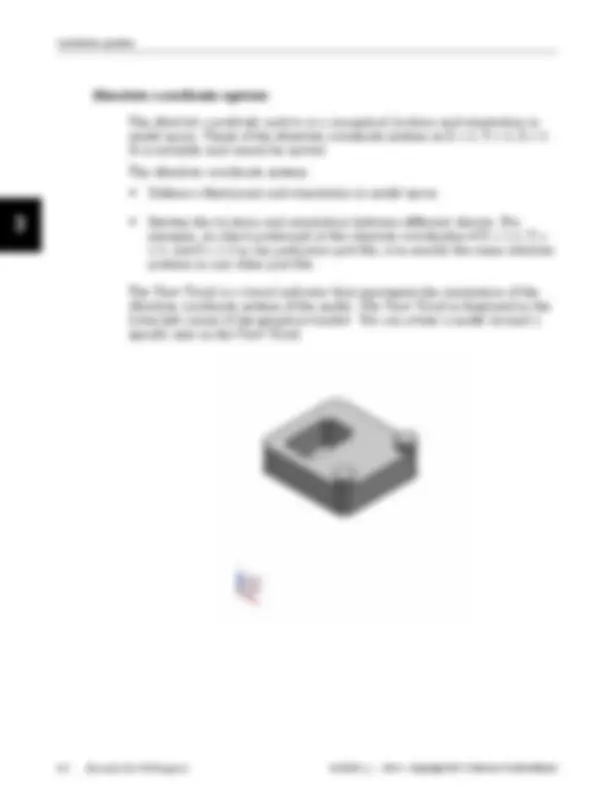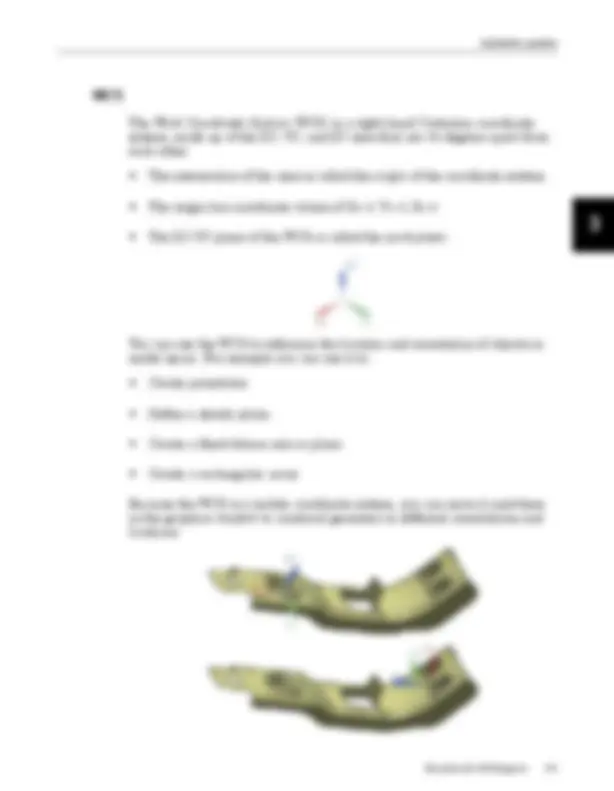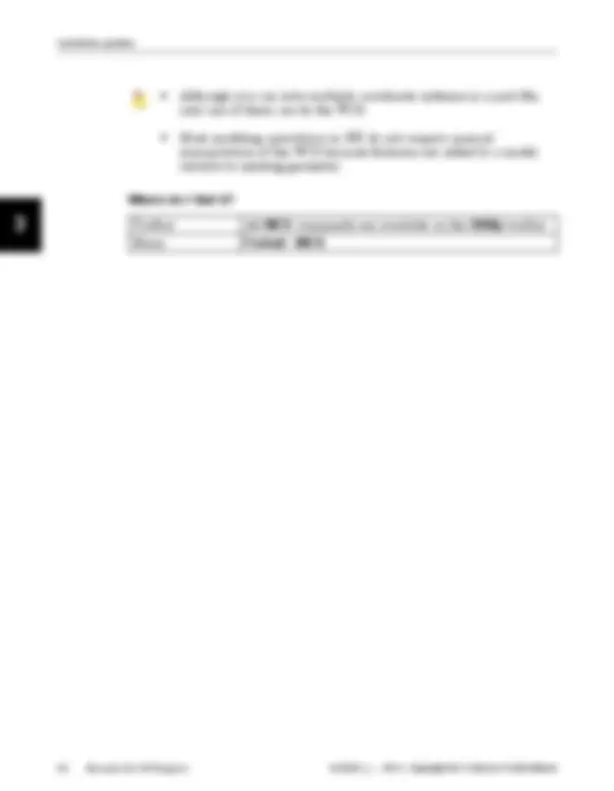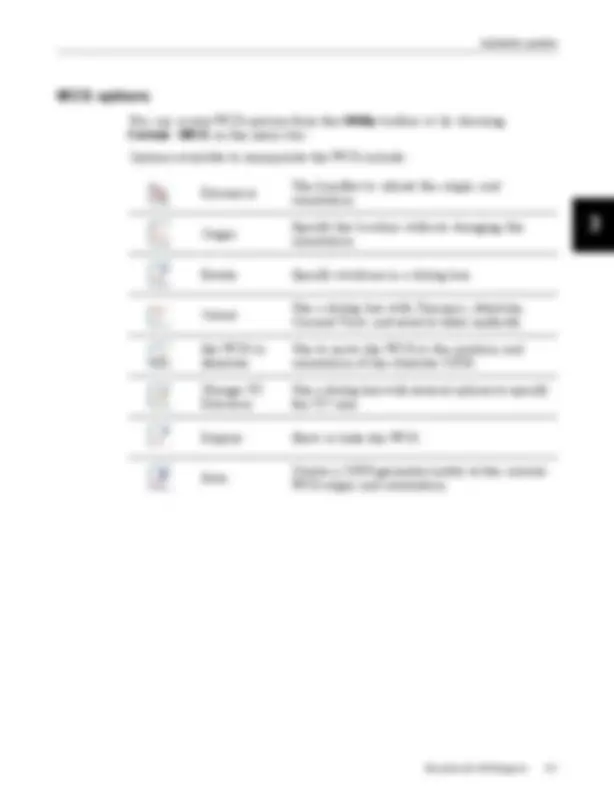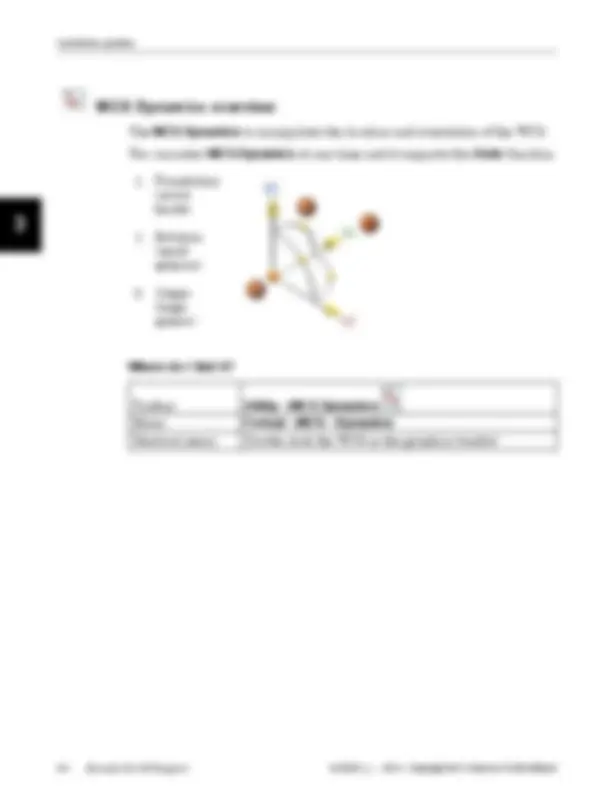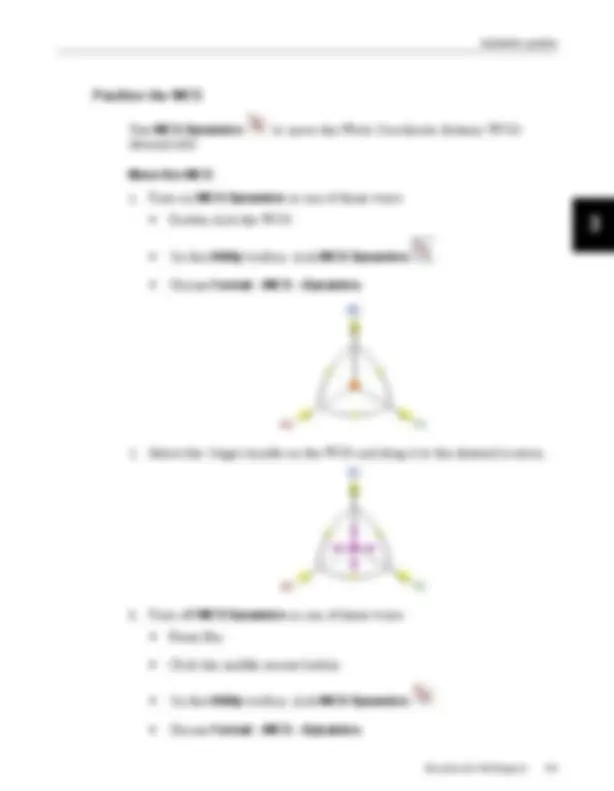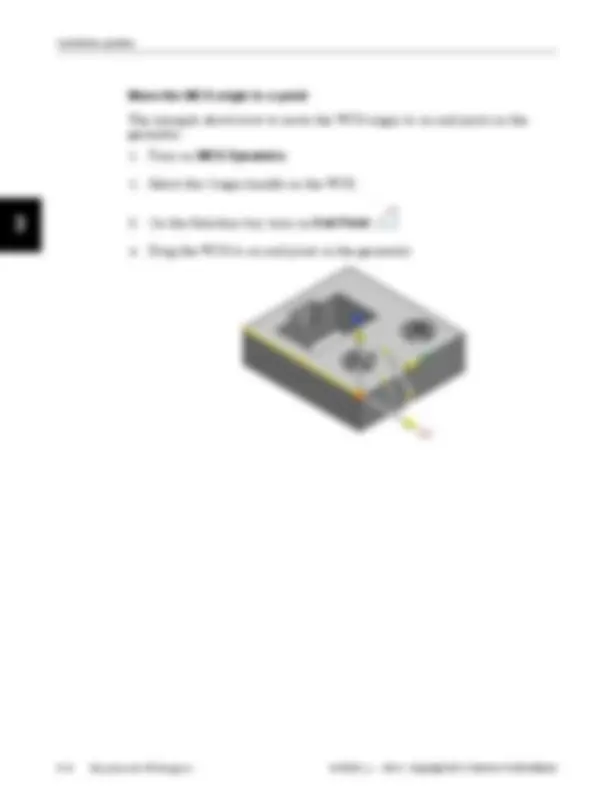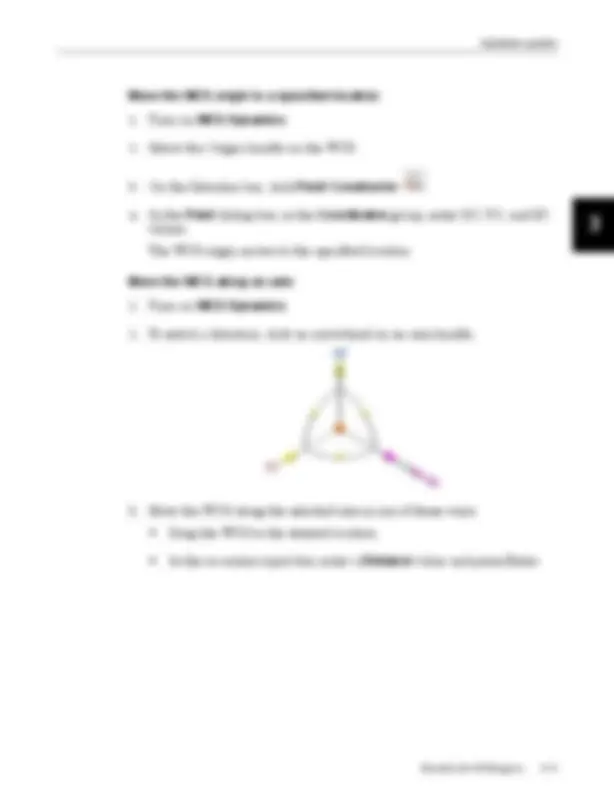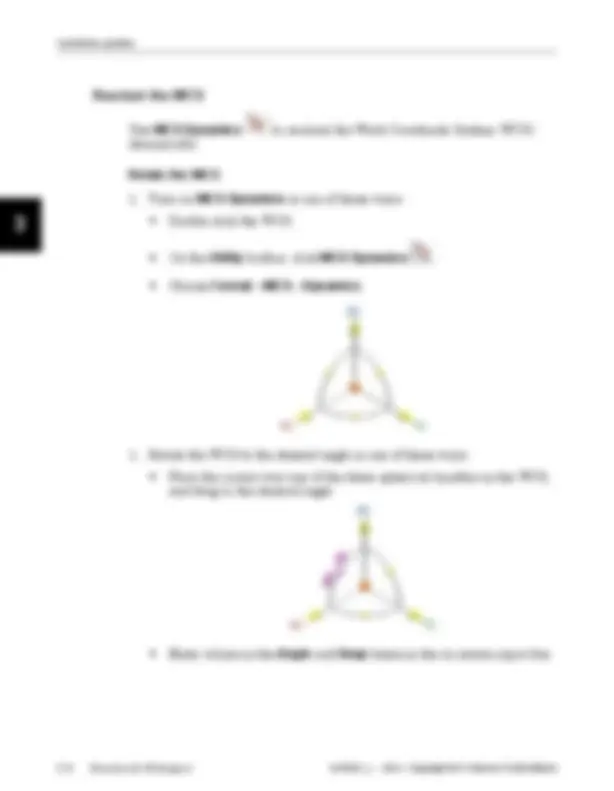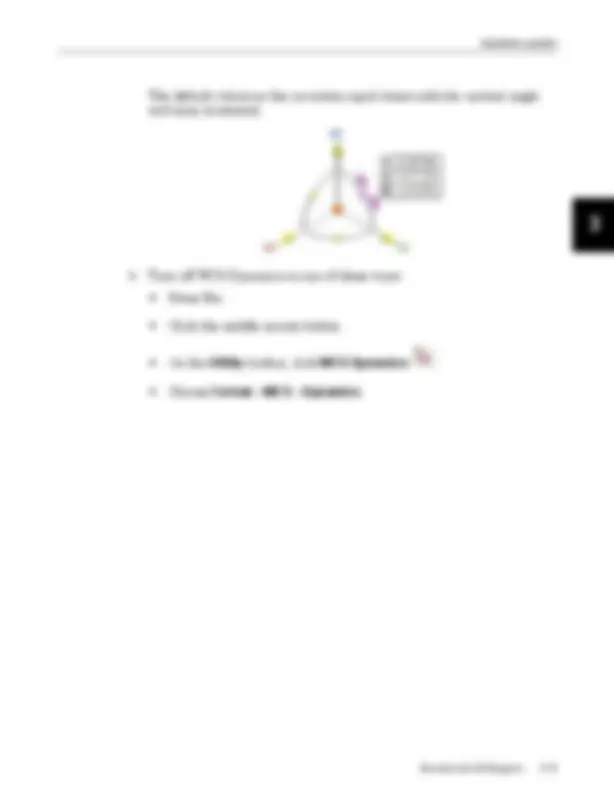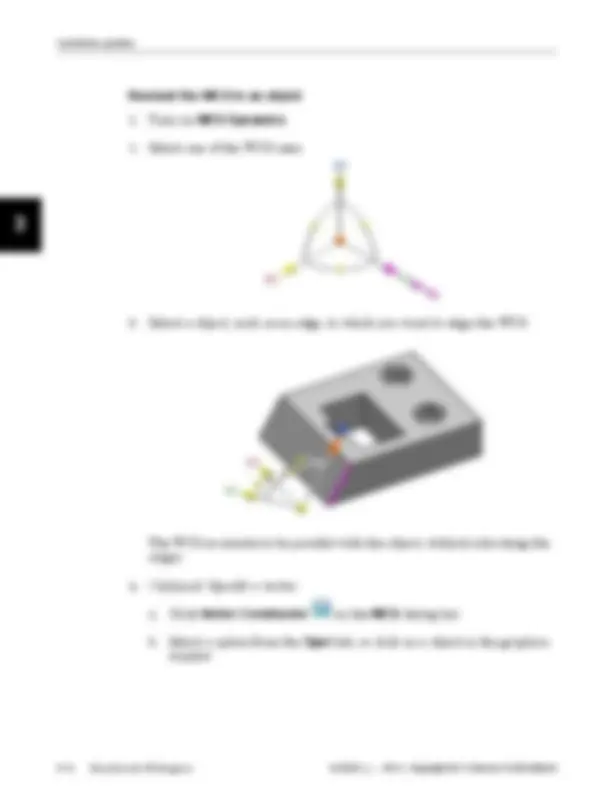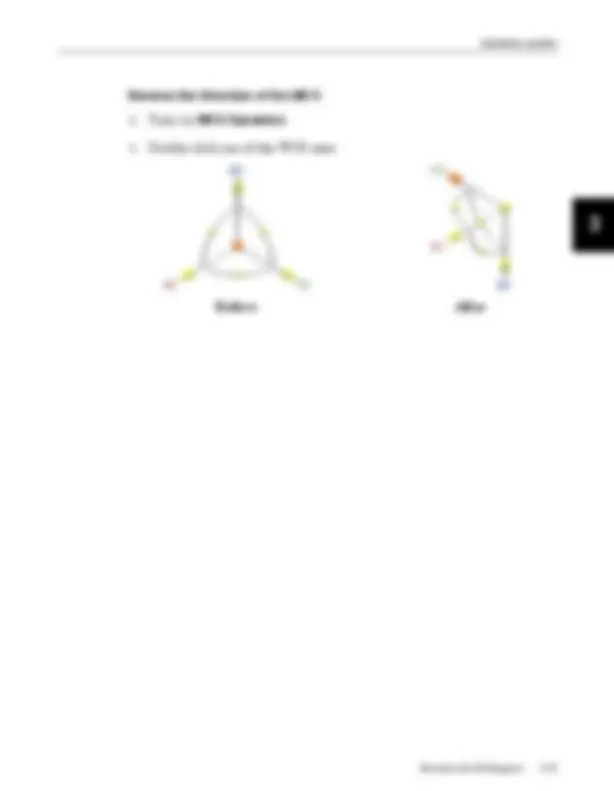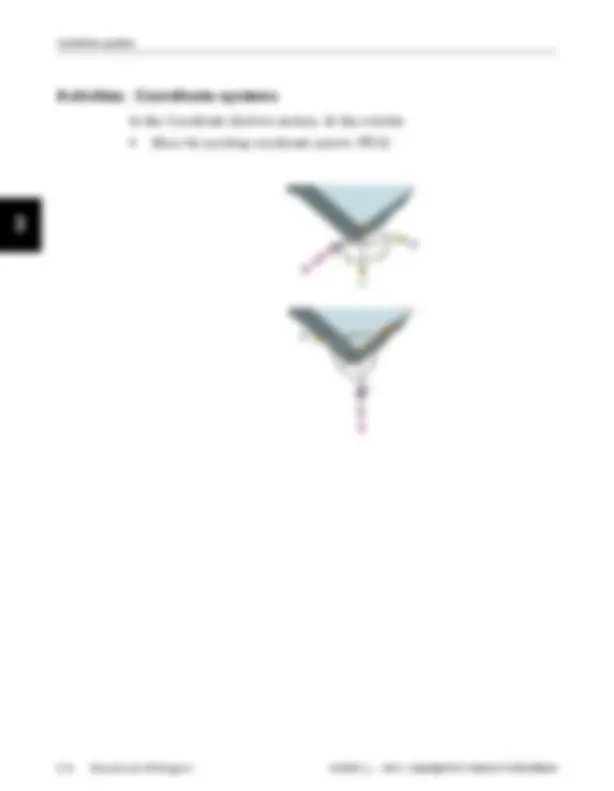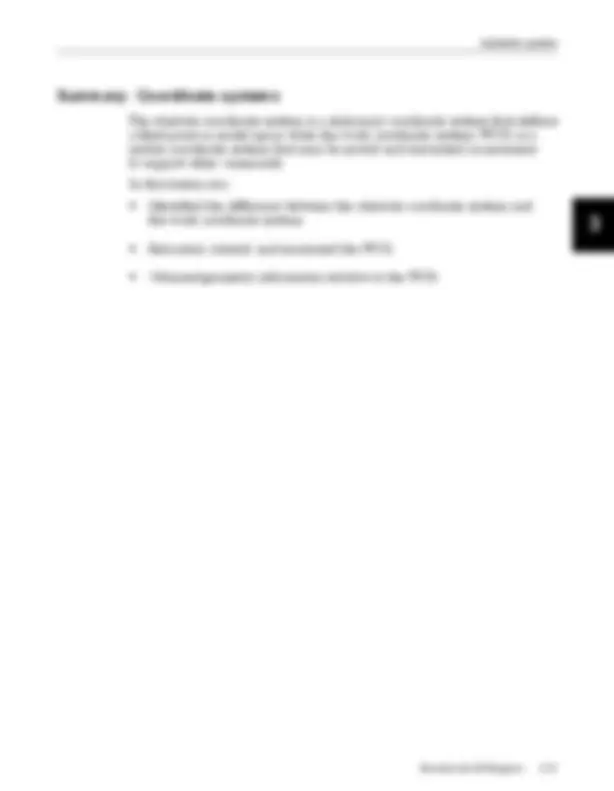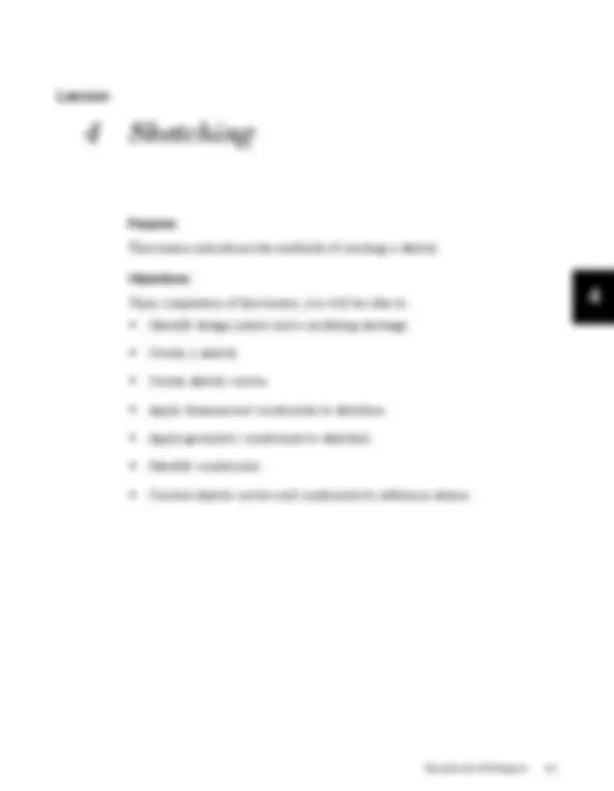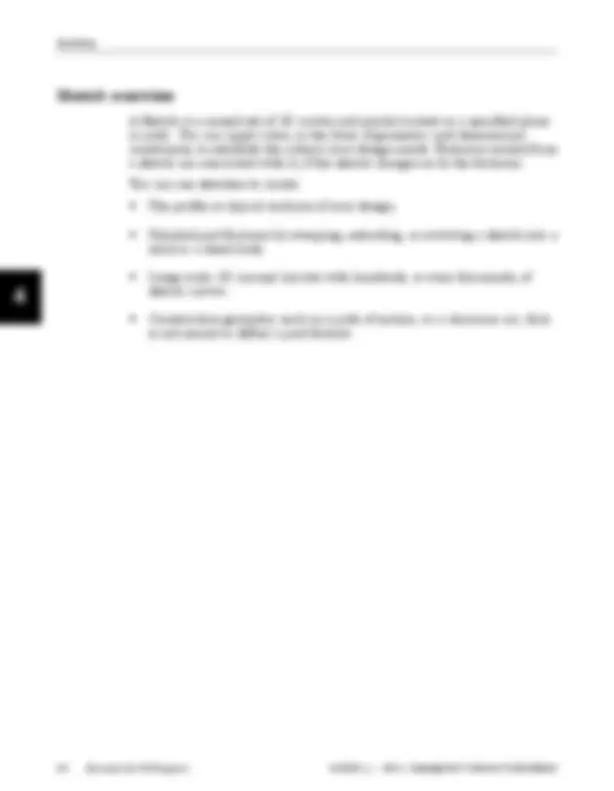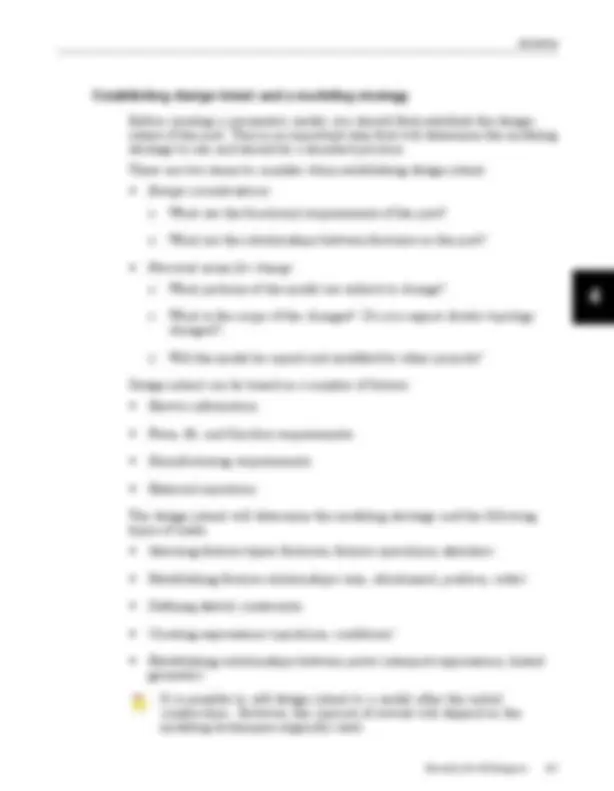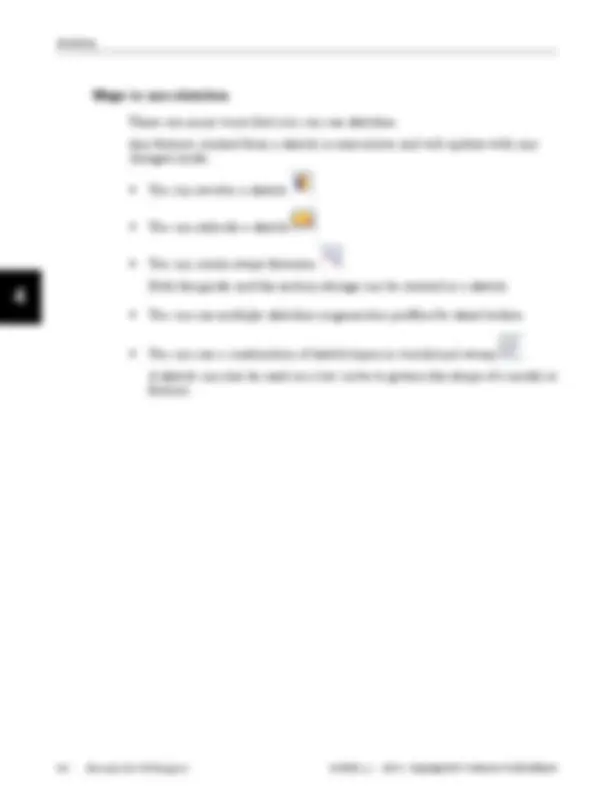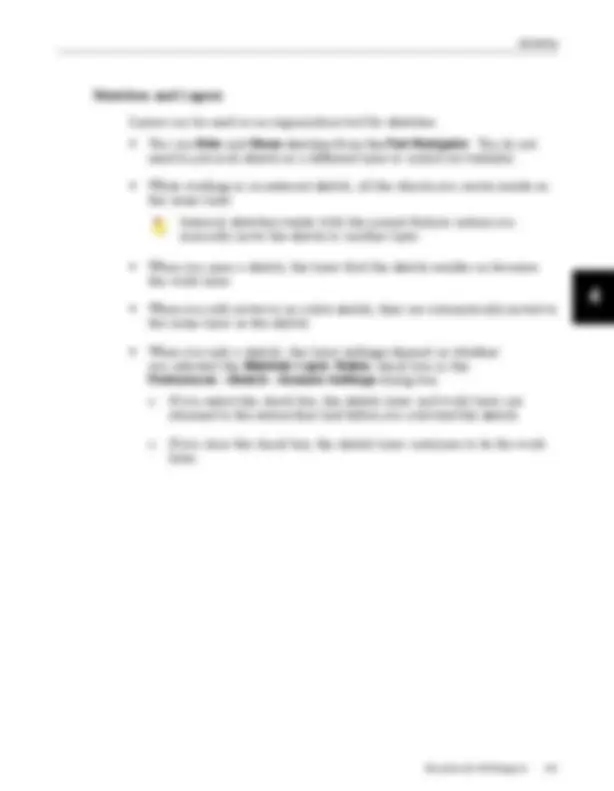Baixe mt10051-s-nx8 - essentials e outras Notas de estudo em PDF para Engenharia Mecânica, somente na Docsity!
Essentials for NX Designers
Student Guide
October 2011
MT10051_S — NX 8
Publication Number mt10051_s – NX 8 – Copyright 2011 Siemens PLM Software
Proprietary and restricted rights notice
This software and related documentation are proprietary to Siemens Product Lifecycle Management Software Inc.
© 2011 Siemens Product Lifecycle Management Software Inc. All Rights Reserved. Siemens and the Siemens logo are registered trademarks of Siemens AG. NX is a trademark or registered trademark of Siemens Product Lifecycle Management Software Inc. or its subsidiaries in the United States and in other countries. All other trademarks, registered trademarks or service marks belong to their respective holders
2 Essentials for NX Designers mt10051_s – NX 8 – Copyright 2011 Siemens PLM Software
- Proprietary and restricted rights notice
- Course overview
- Course objectives
- Lesson format
- Learning tips
- Common symbols
- NX 8 Help Library
- Template parts
- Teamcenter Integration for NX vs. native NX terminology
- Layer standards
- Implementing a layer standard
- NX part files 1-
- Introduction to NX 1- - Gateway application 1- - The NX Window (standard) 1-
- New file overview 1-
- Benefits of using templates 1-
- Create a new file using a template 1-
- Layers 1-
- Show and Hide 1-
- Activities: NX part files — Create new 1-
- Open file overview 1-
- Loading an assembly 1-
- Part Versions group 1-
- Assembly Navigator overview 1-
- Assembly Navigator user interface 1-
- Assembly Navigator hierarchal tree 1-
- Displayed part and work part 1-
- Changing the displayed part 1-
- Design in context of an assembly 1-
- Make Displayed Part and Set Displayed Part 1-
- Make Work Part and Set Work Part 1-
- Save As 1-
- Close selected parts 1-
- Exit an NX session 1-
- Activities: NX part files — Open, save, and close 1- - Essentials for NX Designers
- Summary: NX part files 1- Contents
- The NX user interface 2-
- Customize and display toolbars 2- - Display toolbars 2- - Display toolbars using the shortcut menu 2- - Add or remove toolbar buttons 2- - Access options on undocked toolbars 2-
- Command Finder 2- - Search for a command 2-
- Dialog boxes and the Dialog Rail 2- - Dialog Rail options 2-
- Roles 2-
- Example roles 2-
- Choose a role 2-
- Save toolbar configuration between sessions 2-
- Activities: User interface — Toolbars and Roles 2-
- Using the mouse 2- - View shortcut menu 2- - Radial toolbars 2- - Graphics window view manipulation 2-
- Selecting objects 2- - Deselect objects 2-
- Preview selection 2-
- Selection bar 2-
- Selection bar Snap Point options 2-
- QuickPick 2-
- Activities: User Interface — Views 2-
- Summary: User interface 2-
- Coordinate systems 3-
- Coordinate systems 3- - Absolute coordinate system 3- - WCS 3-
- WCS options 3-
- WCS Dynamics overview 3-
- Position the WCS 3-
- Reorient the WCS 3-
- Activities: Coordinate systems 3-
- Summary: Coordinate systems 3-
- Sketching 4-
- Sketch overview 4- - Establishing design intent and a modeling strategy 4- - Ways to use sketches 4-
- Sketches and Layers 4- Contents
- General process for using sketches 4-
- Direct Sketch and the Sketch task environment 4-
- Create Sketch overview 4-
- Sketch On Plane 4-
- Create a sketch on a plane or planar face 4-
- Direct sketching 4-
- Sketch Task Environment overview 4-
- Sketch reference direction 4-
- Intermediate Datum CSYS 4-
- Name sketches in the Modeling application 4-
- Name sketches in Sketch Task Environment 4-
- Exit Sketch 4-
- Direct sketch and feature edit preferences 4-
- Activities: Sketching 4-
- Sketch curves 4-
- Sketch help lines 4-
- Short List 4-
- Continuous Auto Dimensioning 4-
- Inferred Constraints and Dimensions 4-
- Inferred Constraints and Dimensions dialog box 4-
- Inferred Constraints and Dimensions options 4-
- The Snap Angle option 4-
- Profile dialog bar 4-
- Create Profile sketch curves 4-
- Create lines parallel or perpendicular to other lines 4-
- Create lines tangent to curves 4-
- Create lines at angles 4-
- Sketch Point 4-
- Activities: Sketching curves 4-
- Sketch curve functions 4- - Quick Trim 4-
- Sketching constraints and Quick Trim 4-
- Use Quick Trim 4-
- Sketcher constraints and Quick Extend 4-
- Use Quick Extend 4-
- Make Corner 4-
- Fillet 4-
- Chamfer 4-
- Corner 4- Activities: Chamfer, Fillet, Quick Trim, Quick Extend, Make
- Types of constraints 4-
- Degree-of-freedom arrows 4- - Essentials for NX Designers
- Constraints 4- Contents
- Create geometric Constraints 4-
- Constraints quick reference 4-
- Show All Constraints 4-
- Show No Constraints 4-
- Show / Remove Constraints 4-
- Show / Remove Constraints dialog box 4-
- Activities: Sketch Constraints 4-
- Sketch dimensions 4- - Sketch dimension types 4- - Inferred Dimensions 4- - Create Inferred Dimensions 4- - Edit sketch dimensions 4- - Dimensions dialog bar 4- - Dimensions dialog box 4- - Show Dimensions overview 4-
- Convert To/From Reference 4-
- Activities: Create constraints 4-
- Projects: Simple Sketching 4-
- Summary: Sketching 4-
- Expressions 5-
- Expressions overview 5- - Expression examples 5- - Expressions case sensitivity 5-
- Expressions dialog box 5- - Creating expressions 5- - Create a numerical expression 5- - Edit an expression 5-
- Listing expressions associated with features 5- - List References 5-
- Insert Name 5-
- Parameter entry options 5-
- Expression options 5-
- Activities: Expressions 5-
- Summary: Expressions 5-
- Datum features 6-
- Datum Plane 6-
- Datum plane types 6-
- Datum plane options 6-
- Applications for datum planes 6-
- Create an inferred datum plane with an offset 6-
- Create a datum plane midway between planar faces 6-
- Create a datum plane at an angle 6-
- Create a datum plane through three points 6- Contents
- Activities: Datum features — Relative 6-
- Datum Axis 6-
- Datum axis types 6-
- Datum axis options 6-
- Applications for datum axes 6-
- Create a datum axis through two points 6-
- Create a datum axis at an intersection 6-
- Create a datum axis from a point and a direction 6-
- Create a datum axis on an edge and normal to a face 6-
- Datum CSYS 6-
- Activities: Datum features — cylindrical faces and other datums 6-
- Summary: Datum features 6-
- Swept features 7-
- Types of swept features 7-
- Internal and external sketches 7- - Internal and external sketch status change 7-
- Extrude 7-
- Extrude start and end distances 7-
- Create a simple extruded feature 7-
- Combining bodies using Boolean commands 7- - Extrude – Inferred Boolean 7-
- Body type 7-
- Revolve 7-
- Revolve start and end angles 7-
- Specifying vectors using the OrientXpress tool 7-
- Create a simple revolved feature 7-
- Sweep along Guide 7-
- Create a simple sweep along guide feature 7-
- Activities: Swept features 7-
- Projects: Simple Sweeps 7-
- Summary: Swept features 7-
- Part structure 8-
- Part Navigator 8-
- Main panel 8-
- Dependencies panel 8-
- Details panel 8-
- Preview panel 8-
- Timestamp order 8-
- Switch between timestamp order view and design view 8-
- Part Navigator shortcut menu 8-
- Feature Replay 8-
- Reorder feature overview 8- - Essentials for NX Designers
- Reorder an object in the Part Navigator 8- Contents
- Browser 8-
- Types of features you can browse 8-
- Feature and object information 8-
- Referenced expressions 8- - List referenced expressions 8-
- Measure Distance overview 8-
- Find the minimum distance between two objects 8-
- Measure Bodies overview 8- - Assign a material to a solid body 8-
- Delayed updates 8-
- Activities: Part structure 8-
- Summary: Part structure 8-
- Using sketches 9-
- Edit sketches with drag 9- - Drag to assist sketch constraints 9- - Copy, move, and edit sketch objects 9-
- Create Inferred Constraints 9-
- Auto Dimension 9-
- Auto Constrain 9-
- Activity: Auto Dimensioning Rules 9-
- Alternate Solution 9-
- Use Alternate Solution on tangent constraints 9-
- Use Alternate Solution on a dimension 9-
- Activities: Experiment with alternate solutions 9-
- Edit Dimension Associativity 9-
- Attach a Dimension to different geometry 9-
- Reattach Sketch overview 9-
- Reattach a sketch on plane 9-
- Activities: Reattach sketches 9-
- Mirror Curve 9-
- Mirror sketch curves 9-
- Activities: Mirror and Make Symmetric 9-
- Sketch evaluation and update techniques 9-
- Summary: Using sketches 9-
- Trim Body 10-
- Trim Body 10-
- Trim a solid body to a face 10-
- Activities: Trim Body 10-
- Projects: Trim Body 10-
- Summary: Trim Body 10-
- Swept feature options 11-
- Selection Intent - Curve Rule 11- Contents - Curve Rule options 11- - Active Selection mini toolbar 11- - Changing selection intent rules 11- - Curve collection modifiers 11-
- Extrude start and end limits 11-
- Extrude with offset 11-
- Two sided offset examples 11-
- Single-sided offset examples 11-
- Extrude with draft 11- - Positive and negative draft angles 11- - Draft and the extrude direction 11-
- Draft offset example 11-
- DesignLogic parameter entry options 11-
- Reference existing parameters 11-
- Activities: Swept feature options 11-
- Project: Advanced sweeps 11-
- Summary: Swept feature options 11-
- Hole features 12-
- Hole overview 12-
- Hole dialog box 12-
- Hole position and direction options 12-
- Hole form and dimension options 12-
- Create a General Hole feature 12-
- Activities: Hole features 12-
- Project: Hole features 12-
- Summary: Hole features 12-
- Shell 13-
- Create a shell 13-
- Assign alternate thicknesses 13-
- Shell options 13-
- Selection Intent face rules 13-
- Activities: Shell 13-
- Summary: Shell 13-
- Associative copies 14-
- Pattern Feature 14-
- Pattern Feature methods 14-
- Create a linear pattern of features in two directions 14-
- Create a circular pattern of concentric features 14-
- Activities: Associative copies – pattern features 14-
- Feature Group 14- - Essentials for NX Designers - Feature Group – embedded features 14- Contents - Create a new feature group 14-
- Activities: Feature Group 14-
- Mirror Body 14- - Create a mirrored body 14- - Edit a mirrored body 14- - Mirror Body options 14-
- Activities: Associative copies – mirror 14-
- Summary: Associative copies 14-
- Edge operations 15-
- Edge Blend overview 15- - Edge Blend dialog box 15- - Edge Blend preview 15- - Add New Set 15-
- Activities: Edge operations — blends 15-
- Chamfer overview 15- - Create a Chamfer 15- - Chamfer options 15-
- Activities: Edge operations — chamfers 15-
- Projects: Shell, Associative Copies, Blends and Chamfers 15-
- Summary: Edge operations 15-
- Introduction to Synchronous Modeling 16-
- Synchronous Modeling 16-
- Move Face 16- - Move Face options 16-
- Resize Blend 16-
- Activities: Introduction to Synchronous Modeling 16-
- Summary: Introduction to Synchronous Modeling 16-
- Introduction to Assemblies 17-
- Introduction to NX Assemblies 17-
- Assembly 17-
- Subassembly 17-
- Component objects 17-
- Component Part Files 17-
- Load states 17-
- Scope group 17-
- Reference Sets 17-
- Saved Load Options 17- - Navigator 17- Activities: Assemblies — assembly load options and the Assembly
- Select components 17- - Select components with QuickPick 17- - Identify components 17- Contents
- Assembly Navigator display commands 17-
- Activities: Assemblies — more navigator options 17-
- Part revisions and saving assemblies 17-
- Save 17-
- Save Work Part Only 17-
- Summary: Assemblies 17-
- Adding and constraining components 18-
- General assembly concepts 18-
- Bottom-up assembly modeling 18- - Add Component 18- - Add Component options 18- - Component Preview window 18-
- Activities: Adding components — create assembly 18-
- Move Component 18-
- Move Component options 18-
- Assembly Constraints 18- - Assembly constraints and the Assembly Navigator 18- - Assembly constraint types 18- - Create a Touch Align constraint 18- - Create a Center constraint 18- - Create a Concentric constraint 18- - Create a Distance constraint 18- - Create a Fix constraint 18- - Create a Parallel constraint 18- - Create a Perpendicular constraint 18- - Create a Fit constraint 18- - Create a Bond constraint 18- - Create an Angle constraint 18- - Constraint Navigator 18- - Constraint Navigator grouping modes 18-
- Show Degrees of Freedom 18-
- Activities: Adding and constraining components — constrain 18-
- Part family members in assemblies 18- - Part family terminology 18-
- Activities: Family of parts 18-
- Projects: Adding and constraining components 18-
- Summary: Adding and constraining components 18-
- Introduction to Drafting 19-
- Drafting application overview 19-
- The 3D drafting process in NX 19-
- The Drafting interface 19-
- Master model concept 19- - Essentials for NX Designers - Create a new master model drawing 19- Contents
- Create a new drawing sheet 19-
- Open a drawing sheet 19-
- Edit a drawing sheet 19-
- Delete a drawing sheet 19-
- Change drawing display to monochrome 19-
- Activities: Drafting – Edit a master model, Create drawings 19-
- Drafting View Style and View Preferences 19- - Hidden Lines tab 19- - Smooth Edges 19-
- The View Creation Wizard 19- - The View Creation Wizard window 19- - Create a multi-view layout using the View Creation Wizard 19-
- Base views 19-
- Base View options 19-
- Create a Base view 19-
- Projected views 19-
- Projection lines 19-
- Preview 19-
- Projected View options 19-
- Edit the style of an existing view 19-
- Drag views on a drawing 19-
- Delete views on a drawing 19-
- Activities: Drafting — add views 19-
- Dimensions 19- - Create a dimension — general procedure 19- - Annotation Preferences 19- - Dimension preferences and placement 19- - Annotation placement options 19- - Snap Point options 19- - Placement cues for dimensions 19- - Append text to a dimension 19- - Change text orientation and text arrow placement 19- - Move a dimension 19- - Edit a dimension 19- - Change the precision of a dimension 19- - Inherit preferences from an existing dimension 19-
- Activities: Drafting — dimensions 19-
- Note 19- - Helper lines 19- - Create a note 19- - Create a label 19- - Edit an existing note or label 19-
- Activities: Drafting — Notes and labels 19-
- Projects: Drafting 19-
- Summary: Drafting 19- Contents
- Practice projects A-
- Practice Project 1 A-
- Practice Project 2 A-
- Practice Project 3 A-
- Practice Project 4 A-
- Practice Project 5 A-
- Practice Project 6 A-
- Practice Project 7 A-
- Practice Project 8 A-
- Practice Project 9 A-
- Practice Project 10 A-
- Practice Project 11 A-
- Practice Project 12 A-
- Practice Project 13 A-
- Practice Project 14 A-
- Practice Project 15 A-
- Practice Project 16 A-
- Practice Project 17 A-
- Practice Project 18 A-
- Practice Project 19 A-
- Practice Project 20 A-
- Practice Project 21 A-
- Practice Project 22 A-
- Practice Project 23 A-
- Expression operators B-
- Operators B-
- Precedence and associativity B-
- Legacy unit conversion B-
- Built-in functions B- - Scientific notation B-
- Point options C-
- Point dialog box C-
- Point types C-
- WCS and absolute coordinates C-
- Primitive solids D-
- Primitive solids D-
- Features with predefined shapes E- - Essentials for NX Designers
- Boss E- Contents
- Slot E-
- Rectangular slot E-
- Other slot types E-
- Thru slot E-
- Pocket E-
- Pad E-
- Groove E-
- Positioning methods E- - Horizontal E- - Vertical E- - Perpendicular E- - Point onto Line E- - Parallel E- - Point onto Point E- - Parallel at a distance E- - Line onto line E- - Angular E-
- Edit positioning E- - Add dimension E- - Edit dimension value E- - Delete dimension E- - Display dimensions E-
- Customer Defaults F-
- Customer Defaults F- - Customer Defaults levels F- - Setting Customer Defaults F- - Customer Defaults environment variables F- - USER, GROUP, and SITE directories F- - Managing your changes F- - Updating to a new release of NX F-
- Custom Roles G-
- User-Defined Roles G-
- Create a User Role G-
- Activity: Create a User Role G-
- Edit a User Role G-
- Create a Group Role G-
- Activity: Create a Role Palette with a Group Role G-
- Protected Roles G-
- Glossary H-
Course overview
Intended audience
This course is suited for designers, engineers, manufacturing engineers, application programmers, NC programmers, CAD/CAM managers, and system managers who need to manage and use NX.
Prerequisites
There are no prerequisites for this class.
Course objectives
After successfully completing this course, you should be able to:
- Open and examine NX models.
- Create and edit parametric solid models.
- Create and modify basic assembly structures.
- Create and modify simple drawings.
Lesson format
The general format for lesson content is:
- Instructor presentation
- One or more activities
- Project
Projects allow you to test your new skills without detailed instruction.
Consult your instructor for additional information.
Essentials for NX Designers 17
Course overview
Template parts
Template parts are an effective tool for establishing customer defaults or any settings that are part-dependent (saved with the part). This may include non-geometric data such as:
- A frame of reference, such as a datum coordinate system
- Commonly used expressions
- An initial application such as Modeling, Drafting, or Sheet Metal
- Part attributes, for example, attributes for a parts list
- Drawing formats
- User-defined views
- Layer categories
Choose a template from the New dialog box.
Essentials for NX Designers 19
Course overview
Teamcenter Integration for NX vs. native NX terminology
Teamcenter Integration for NX Term Native NX Term Item Part Item revision Part revision Dataset Part file Item ID Part number UGMASTER dataset Master part file UGPART dataset (specification or manifestation)
Non-master part file (for example, a drawing or manufacturing file)
When you work in NX, you manipulate parts, part revisions and part files. These correspond to items, item revisions, and datasets in Teamcenter Integration for NX and Teamcenter.
20 Essentials for NX Designers mt10051_s – NX 8 – Copyright 2011 Siemens PLM Software

